1. Stunning Coral Reefs: Palau has some of the most beautiful and diverse coral reefs in the world, with over 700 species of coral and 1,500 species of fish.
2. World-Class Wrecks: Palau is home to some of the most impressive wreck dives in the world, including the famous Japanese supply ship, the Iro Maru.
3. Manta Rays: Palau is one of the few places in the world where you can consistently see manta rays year-round.
4. Shark Action: Palau is famous for its shark diving, with opportunities to see a variety of species, including grey reef sharks, whitetip reef sharks, and even hammerhead sharks.
5. Jellyfish Lake: Palau is home to Jellyfish Lake, where you can swim with millions of non-stinging jellyfish.
6. World Heritage Site: Palau's Rock Islands were declared a UNESCO World Heritage Site in 2012 due to their natural beauty and ecological significance.
7. Unique Dive Sites: Palau has a range of unique dive sites, including Blue Corner, which offers the opportunity to dive in a strong current and see large schools of fish.
8. Underwater Caves: Palau has a number of underwater caves and swim-throughs that offer a unique and exciting diving experience.
9. Conservation Efforts: Palau is committed to marine conservation and has created a number of marine protected areas to ensure the sustainability of its diving industry.
10. Diverse Marine Life: Palau's diverse marine life includes not only coral and fish, but also a variety of invertebrates, reptiles, and mammals, such as sea turtles and dugongs.
These are just a few of the reasons why Palau is a world-class diving destination that should be on every diver's bucket list.
Palau liveaboard diving is consistently chosen as one of the world's premiere diving destinations by several international diving publications, Palau features enchanting topside topography as well as breathtaking underwater landscapes. Experience big fish action at the Blue corner and New drop off. Shafts of light cutting through deep shadows create a near-religious experience at the Blue holes, German channel, Chandelier cave, Pelieu, Siaes tunnel, Ulong channel, Wrecks and many more Palau offers some of the most unique holiday possibilities: its natural beauty and untouched wilderness, intact culture, remoteness and stability combine to offer a fantastic destination for adventure seekers.
The spectacular walls along the barrier reef, including such favorites as Blue Corner, Ulong Channel, Big drop-off and many other sensational offer dive sites yet to be charted. You can expect mostly wall and drift diving with visibility ranging from 20m / 70 feet to 50m / 150 feet depending on prevailing conditions.
All our boats are liveaboards for people enthusiastic or serious about their diving but also welcome snorkellers and non-divers who will have their own separate itinerary.
It is located between Guam, the Philippines and Papua New Guinea. Palau is a 400-mile long archipelago, which hosts one of the world's most unique phenomena - " Rock Island". These mushroom like islets are uninhabited and located in a large lagoon that has a vast concentration of corals, fish and other marine life. White sand beaches, lush jungle and remote waterfalls are just among the highlights of Palau.
The islands of Micronesia are scattered over three million square miles of the North Pacific. Palau is the Pacific’s newest nation, a Mecca for divers and home of the exquisite Jellyfish Lake. The Republic of Palau lies east of the Philippines and comprises of some 350 islands. They are grouped in six clusters stretching to 400miles from North to South, Kayangel Atoll to Tobi Islands.
Palau is world renowned as an unsurpassed dive destination that also offers the sublime Rock Islands, dramatic waterfalls, pristine white sand beaches and some of the most intriguing native flora and fauna found anywhere in the Pacific Ocean. Explore the beauty of Palau with the Big Blue explorer.
Palau has been described as one of the Seven Underwater Wonders of the World, with 700 species of coral and 1,200 species of identified fish. Palau provides some of the best diving to be found in Micronesia and ideally is suited for advanced divers.
The spectacular walls along the barrier reef, including such favorites as Blue Corner, Ulong Channel, Big drop-off and many other sensational offer dive sites yet to be charted. You can expect mostly wall and drift diving with visibility ranging from 20m / 70 feet to 50m / 150 feet depending on prevailing conditions.
Kudarah Thila
Type of dive: Reef dive
Description: One of the best dive sites for soft coral and fish life.
The marine life here is so abundant, that the divers have named it ‘fish soup’. The thila is in a circular shape and can be covered in a single dive at different depths, if the current is not very strong.
Maaysa Thila
Type of dive: Reef dive / Night dive
Description: The thila is about 80mters in diameter.
The whole thila can be done at different depths in a single dive. There are manycaves and overhangs around the thila. The large rocks on the north eastern side have large black coral trees growing on them. The site is famous for the sharks and a great barracuda which reside here. The site can be dived at any time of the day, each with different activity going on the reef. The best chance to get close to these creatures is at night time, when they are hunting. You will see sharks, barracudas, rays and eels trying to grab a morsel.
Bathala Maaga Kanthila
Type of dive: Drift dive
Description: The northern tip of Magaa reef extends into Bathalaa Kandu and is home to a number of grey reef sharks and white-tip reef sharks. They can be seen patrolling along the reef looking for food.
Maalhos Thila (Blue Curves)
Type of dive: Drift dive / Reef dive
Description: The thila is known for the abundance of soft coral growth on the thila, particularly the blue/violet colored variety that grows on the ceiling of the caves and overhangs, thus the name ‘blue caves’. In addition a large variety of fish life can be observed here.
Rasdhoo Madivaru
Type of dive: Drift dive / Channel dive
Description: The reef on the southern side of Rasdhoo drops vertically to the ocean depths. The site is home to a school of Scalloped Hammerhead sharks (sphyrna lewini). In the early hours of the morning they rise from the deep waters off the atoll into the shallower depths, accessible to divers.
South Male Atoll - some of the more popular dive sites
Guraidhoo Kandu South
Type of dive: Drift dive / channel dive
Description: Since the eastern side of the channel is Open Ocean, large predatory fish can regularly be spotted here. This site is famous for sightings of sharks, schools of eagle rays and the occasional Sail fish and Hammerheads. The best condition to do the dive is when the current is flowing into the Atoll. The dive begins on the outer reef following the current into the atoll. Most of the pelagic species can be observed on the eastern side, where the reef drops off into the deep ocean.
At the end of the dive in the channel, along the reef you can find overhangs with plenty of soft coral growth and small fish.
Kandooma Thila
Type of dive: Drift dive / reef dive
Description: Located in a channel, the reef is subject to strong currents at times. The ocean currents carry lot of nutrients to the reef, supporting an abundance of sea life.
The site is well renowned for the soft coral growth, turtles, diverse fish life and invertebrates found on the reef. At the reef slope you may find sharks and eagle rays.
Embudu Kandu (Express)
Type of dive: Drift dive / channel dive.
Description: Similar to Guraidhoo Kandu, but more sharks are likely to be spotted here.
The currents can be very strong at times. The stronger the current however the better chance of seeing sharks. Under the guidance of an experienced dive guide, the dive can be managed done easily.
Raja Ampat (or the Four Kings) is an archipelago consisting of the islands of Misoool, Salawati, Batanta, and Wiageo which are surrounded by over 1,500 small islands and cays. Formerly known as Irian Jaya, this area is now part of the newly named West Papua province of Indonesia and is located on the northwest tip of Bird's Head Peninsula, on the island of New Guinea.
Put simply, Raja Ampat could quite possibly be the best diving in the world. It certainly is the world's most bio diverse marine region with more recorded fish, coral and mollusc species than anywhere else on Earth. The variety of marine life can be staggering. Some areas boast enormous schools of fish and regular sightings of sharks, such as wobbegongs. In Mansuar, you may encounter large groups of manta rays and turtles. From the boat and often close to shore you may get the chance to don your snorkelling gear for some unforgettable interaction with resident pods of dolphins or even some passing whales. Other highlights include the innumerable war wrecks, both ships and planes (with new wrecks being discovered constantly).
The reefs of Raja Ampat are just as varied as the marine life. There are vertical walls, reef flats, slopes, sea mounts, mucky mangroves, lagoons and pinnacles. The reefs are in pristine condition with miles of perfect hard corals and many varied colourful species of soft corals. The diving is predominantly drift dives due to the moderate prevalent currents in the area which provide nutrients for the myriad fish and coral. Currents are average to moderate and vary from none to very strong. Visibility is normally very good but can vary and is normally at its best earlier in the day so your pre-breakfast dives are not to be slept through!
This is truly "Frontier Diving". Topside the beautiful islands stretch as far as you can see and are largely uninhabited. At night the lights of local fishing boats twinkle in the dark along the few inhabited shorelines while in more remote areas you may only see a distant spec of light over the entire horizon.
Raja Ampat has a high season from October to May and weirdly enough it is during their rainy season due to the winds in the dry season making parts of the park inaccessable.
The rainy season should not be mis-construed though. It is generally mostly a shower in the late afternoon and evening and most of the time the days are nice, wind is minimal and the skys are generally clear or slightly over cast.
The seas are calmer at this time of the year as the oppposite season has winds that kick up waves and make it very difficult to dive the more exposed sites in the Southern part of Raja Ampat.
The water temperature stays roughly the same around the 27-30 degrees celcius mark all year round.
Recently, due to the popularity of Raja Ampat, a lot of boats have been running trips in the so called low season (May to October) and this is also the dry season and so promotes nicer weather and better visibility but the trade off is that only the northern more sheltered part of the park is accessable due to higher winds and waves but as the area is so vast and there are so many quality dive sites the reports from these northern trips have been glowing so far and there are new dive sites being discovered all the time.
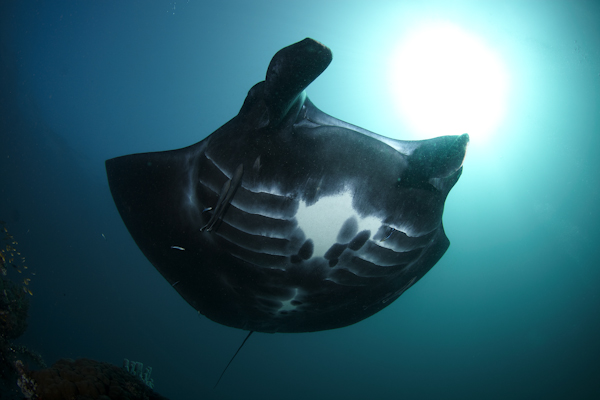
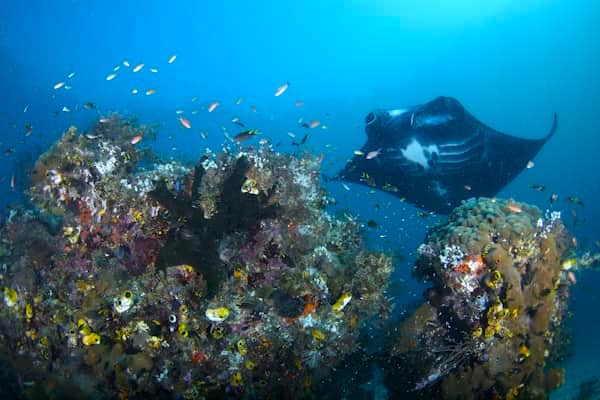
Diving in Komodo is not a new idea but recently it's being recognised as a premier destination due to the awesome variety of diving to be had.
Crystal clear water and dive sites where you never see another diver provide a little something for everyone whether it's macro or massive you love.
One day you can be crawling along the bottom looking at pygmy seahorses, frogfish and unusual nudibranch and the next you are in the big blue on an open water pinnacle as the mantas fly by, the sharks circle and the dolphins hunt and the next day diving a live volcano!!
For sheer variety there is no better place on earth.
Komodo is one of the few places left in the world where sharks are not rare and down south is one of the places where manta rays have their legendary aggregations, meaning they are here in the area in their hundreds!!!
One of the highlights of these trips is the rare opportunity to walk with the lengendary Komodo dragons.
These truly awesome beasts can reach 3 metres plus and can reportedly run at 20km an hour chasing their prey. It's the icing on the cake, Stunning diving and one of the world's last surviving dinosaur descendants all one amazing package.
Covering the best of both worlds, from up close and personal with aggragating mantas to shy pygmy seahorses and rare nudibranches Komodo diving has it all.
The beauty of Komodo liveaboard diving is in the balance between the large and small animals. One day you will be in the blue swimming with mantas and sharks and the next swimming along a bubbling volcanic reef covered with venting submerged fumeroles blowing bubbles into the water and hiding one of the worlds best kept secret macro dive sites.
In North Komodo the water temperature is normally 27-29°C. Around Southern Komodo and Rinca Islands the water temperature drops can drop a bit to 22-26°C. A 5mm long suit is advised and hood and booties are strongly recommended for the southern area.
These are some of the top sites that most liveaboards visit.
Angel reef, Moyo, Sumbawa diving
We start our Komodo liveaboard with the first dive of the trip and the check out dive. This dive site doesn't disappoint. A beautiful wall stretching down to 50 metres covered in hard and soft corals very reminiscent of Bunaken in North Sulawesi. Schools of bannerfish and trevally patrol the walls with the occasional reef sharks making an appearance. Ribbon eels hide in crevices and many different nudibranchs crawl over the vast elephant ear sponges that hang from the beautiful soft coral infested wall.
Satonda island bay
A protected bay on Satonda island north of Sumbawa hosts a treasure trove of macro critters, the more we dive here the more we find. The rare Denise pygmy seahorse lives in fans here, frogfish hang out in big barrel sponges and ghost pipefish hide amongst the featherstars that cover the reef slope. In the sandy bottom you can find jawfish with their mouths full of eggs, myriads of anemonefish, mushroom coral pipefish and spearer mantis shrimps.
Sangeang island diving
Sangieng island is a perfectly round volcanic island jutting up from the sea bed. Still active and last blowing in 1996 this well kept secret is one of the world's finest macro dive areas. With diving available all around the island there is not one specific spot but always new ones to be discovered. Bubbles of volcanic gas seep through the sand creating a surreal atmosphere and a warm black sand bottom hosting rare and unusual nudibranch. Pygmy seahorses, frogfish, Pegasus sea moths and carnivorous shells and all common here, this is my personal favourite dive site as every time we dive here there is a surprise in store of something new that is often not in the books - this site is why you go Komodo liveaboard diving.
Gps point - Gili Banta diving
Gps point is an open sea mount prone to strong currents at certain times of the day. This provides prolific hard and soft coral growth that is home to hundreds of different types of reef fish. Loved by sharks, white tip sharks cruise around the whole dive in amongst the hunting giant trevallies and schooling jacks and surgeon fish, an exciting dive.
Takat Toko, Gili Lawalaut diving
This is one of my favourite sites on the Komodo liveaboard itinerary and is very similar to Gps point this site takes it to the next level. Grey reef shark, white tip sharks, occassional dolphins and a literal fish soup created by jacks, surgeonfish, giant trevallies and bannerfish surround this large sea mount as you hang on to the reef edge and watch the action. Again this site is prone to strong currents but we time our dives to hit around slack tide and a little current brings in the big fish. Great pelagic action, my favourite blue water dive.
Lighthouse reef, Gili Lawalaut diving
An adrenalin pounding drift dive along the wall and around the corner under the lighthouse. Sharks, mantas, dolphins are all frequent visitors on the dive with some of the best coral reef top in the area around the corner out of the current at the end of the dive you can hunt for porcelain crabs, cuttlefish and unusual seahorses whilst waiting for the adrenalin to funnel out of your system and your heart rate to return to normal-this is what Komodo liveaboard diving is all about!.
Crystal rock, Gili Lawalaut diving
A stunning soft coral and sea fan covered pinnacle with crystal water clarity this is a great site for those magazine cover wide angle shots. With at least 5 different types of angelfish, 4 types of trigger and butterflyfish everywhere it is a excellent reef fish dive with frequent visits from eagle and manta rays and the resident sleepy hawksbill turtle.
Pink beach, Komodo diving
Colder water and lower vis here due to the huge amounts of organic matter in the water due to the southern currents but this is more than made up for by the astounding life available to see here due to this phenomenon. Normally done as a night dive it also makes a good day dive with everything from white tip sharks to pygmy seahorses; zebra crabs, Coleman shrimp, many coloured frogfish, xeno crabs, Spanish dancers, and unusual nudibranchs are hidden amongst the dense coral growth.
Cannibal rock, Rinca island diving
Colder water than the north but touted by many as one of the worlds best 10 sites, yes I know there seems to be way more than 10 "top 10 sites" but this one really is one if you like macro. Everything is here even the rarest of the rare, the Rhinopias scorpionfish. It's nudi heaven with only the special and the rare getting to appear here, more species than I care to mention along with large and different frogfish mixed in with schools of fish and the resident dopy turtle we do 2 dives here and it's still not enough!! You will love it, I personally adore this dive site.
Torpedo alley, Rinca island diving
Just next to cannibal rock and where the boat moors is a beach that has wild pigs, monkeys and Komodo dragons in the daytime and hosts a myriad of critters in the waters in front if it at night. Named for the large amount of torpedo rays found here, a member of the electric ray family- no touching! They cover the sandy bottom along with loads of nudis obvious on the black sand bottom along with bizarre crabs and octopus.
Manta alley, Komodo diving
In the cooler waters in the south of Komodo there is a bay in which there are a series of pinnacles that seem to be a magnet for aggregating mantas. They are here in their tens, often we come up having seen over 20 different individuals. Often a little shy, their evasive spins and pirouettes makes the watching of them that much more enjoyable.
Takat Makassar, Komodo diving
This is our other manta site. A little bit more of a risk to see them as it is a huge area and we drift along the bottom in about 10 metres but along the way we always run into loads of turtles, napoleon and humphead wrasse, white tip sharks and very very occasionally you will be incredibly lucky and run into the resident dugong that inhabits this area along with scores of mantas as they migrate north.
3 sisters, Padar island diving
A series of underwater pinnacles reaching nearly to the the surface off the coast of Padar island next to Komodo this site constantly springs surprises on you from silvertip sharks and mobular ray schools to marbled rays and rare nudibranchs.
Maldives dive sites
Kudarah Thila
Type of dive: Reef dive
Description: One of the best dive sites for soft coral and fish life.
The marine life here is so abundant, that the divers have named it ‘fish soup’. The thila is in a circular shape and can be covered in a single dive at different depths, if the current is not very strong.
Maaysa Thila
Type of dive: Reef dive / Night dive
Description: The thila is about 80mters in diameter.
The whole thila can be done at different depths in a single dive. There are manycaves and overhangs around the thila. The large rocks on the north eastern side have large black coral trees growing on them. The site is famous for the sharks and a great barracuda which reside here. The site can be dived at any time of the day, each with different activity going on the reef. The best chance to get close to these creatures is at night time, when they are hunting. You will see sharks, barracudas, rays and eels trying to grab a morsel.
Bathala Maaga Kanthila
Type of dive: Drift dive
Description: The northern tip of Magaa reef extends into Bathalaa Kandu and is home to a number of grey reef sharks and white-tip reef sharks. They can be seen patrolling along the reef looking for food.
Maalhos Thila (Blue Curves)
Type of dive: Drift dive / Reef dive
Description: The thila is known for the abundance of soft coral growth on the thila, particularly the blue/violet colored variety that grows on the ceiling of the caves and overhangs, thus the name ‘blue caves’. In addition a large variety of fish life can be observed here.
Rasdhoo Madivaru
Type of dive: Drift dive / Channel dive
Description: The reef on the southern side of Rasdhoo drops vertically to the ocean depths. The site is home to a school of Scalloped Hammerhead sharks (sphyrna lewini). In the early hours of the morning they rise from the deep waters off the atoll into the shallower depths, accessible to divers.
South Male Atoll - some of the more popular dive sites
Guraidhoo Kandu South
Type of dive: Drift dive / channel dive
Description: Since the eastern side of the channel is Open Ocean, large predatory fish can regularly be spotted here. This site is famous for sightings of sharks, schools of eagle rays and the occasional Sail fish and Hammerheads. The best condition to do the dive is when the current is flowing into the Atoll. The dive begins on the outer reef following the current into the atoll. Most of the pelagic species can be observed on the eastern side, where the reef drops off into the deep ocean.
At the end of the dive in the channel, along the reef you can find overhangs with plenty of soft coral growth and small fish.
Kandooma Thila
Type of dive: Drift dive / reef dive
Description: Located in a channel, the reef is subject to strong currents at times. The ocean currents carry lot of nutrients to the reef, supporting an abundance of sea life.
The site is well renowned for the soft coral growth, turtles, diverse fish life and invertebrates found on the reef. At the reef slope you may find sharks and eagle rays.
Embudu Kandu (Express)
Type of dive: Drift dive / channel dive.
Description: Similar to Guraidhoo Kandu, but more sharks are likely to be spotted here.
The currents can be very strong at times. The stronger the current however the better chance of seeing sharks. Under the guidance of an experienced dive guide, the dive can be managed done easily.
Some of the most frequently asked questions about Maldives Diving
When is the Best time to Go / Maldives Dive Seasons
About Maldives Diving and the Dive Sites
How to get to the Maldives
The top 10 reasons to join a Liveaboard in the Maldives
What are the advantage of a Liveaboard over Shore diving
Are these trips suitable for non-divers / snorkellers
Some of the most frequently asked questions about Indonesian Diving
When is The Best time to Go
Raja Ampat Diving and the Dive sites
Komodo Diving and the Dive sites
The top 10 reasons to join a Liveaboard in Raja
What are the advantage of a Liveaboard over Shore diving
Are these trips suitable for non-divers / snorkellers
Raja Ampat (or the Four Kings) is an archipelago consisting of the islands of Misoool, Salawati, Batanta, and Wiageo which are surrounded by over 1,500 small islands and cays. Formerly known as Irian Jaya, this area is now part of the newly named West Papua province of Indonesia and is located on the northwest tip of Bird's Head Peninsula, on the island of New Guinea.
Put simply, Raja Ampat could quite possibly be the best diving in the world. It certainly is the world's most bio diverse marine region with more recorded fish, coral and mollusc species than anywhere else on Earth. The variety of marine life can be staggering. Some areas boast enormous schools of fish and regular sightings of sharks, such as wobbegongs. In Mansuar, you may encounter large groups of manta rays and turtles. From the boat and often close to shore you may get the chance to don your snorkelling gear for some unforgettable interaction with resident pods of dolphins or even some passing whales. Other highlights include the innumerable war wrecks, both ships and planes (with new wrecks being discovered constantly).
The reefs of Raja Ampat are just as varied as the marine life. There are vertical walls, reef flats, slopes, sea mounts, mucky mangroves, lagoons and pinnacles. The reefs are in pristine condition with miles of perfect hard corals and many varied colourful species of soft corals. The diving is predominantly drift dives due to the moderate prevalent currents in the area which provide nutrients for the myriad fish and coral. Currents are average to moderate and vary from none to very strong. Visibility is normally very good but can vary and is normally at its best earlier in the day so your pre-breakfast dives are not to be slept through!
This is truly "Frontier Diving". Topside the beautiful islands stretch as far as you can see and are largely uninhabited. At night the lights of local fishing boats twinkle in the dark along the few inhabited shorelines while in more remote areas you may only see a distant spec of light over the entire horizon.
Raja Ampat has a high season from October to May and weirdly enough it is during their rainy season due to the winds in the dry season making parts of the park inaccessable.
The rainy season should not be mis-construed though. It is generally mostly a shower in the late afternoon and evening and most of the time the days are nice, wind is minimal and the skys are generally clear or slightly over cast.
The seas are calmer at this time of the year as the oppposite season has winds that kick up waves and make it very difficult to dive the more exposed sites in the Southern part of Raja Ampat.
The water temperature stays roughly the same around the 27-30 degrees celcius mark all year round.
Recently, due to the popularity of Raja Ampat, a lot of boats have been running trips in the so called low season (May to October) and this is also the dry season and so promotes nicer weather and better visibility but the trade off is that only the northern more sheltered part of the park is accessable due to higher winds and waves but as the area is so vast and there are so many quality dive sites the reports from these northern trips have been glowing so far and there are new dive sites being discovered all the time.
Raja Ampat has a high season from October to May and weirdly enough it is during their rainy season due to the winds in the dry season making parts of the park inaccessable.
The rainy season should not be mis-construed though.
It is generally mostly a shower in the late afternoon and evening and most of the time the days are nice, wind is minimal and the skys are generally clear or slightly over cast.
The seas are calmer at this time of the year as the oppposite season has winds that kick up waves and make it very difficult to dive the more exposed sites in the Southern part of Raja Ampat.
The water temperature stays roughly the same around the 27-30 degrees celcius mark all year round.
Recently, due to the popularity of Raja Ampat, a lot of boats have been running trips in the so called low season (May to October) and this is also the dry season and so promotes nicer weather and better visibility but the trade off is that only the northern more sheltered part of the park is accessable due to higher winds and waves but as the area is so vast and there are so many quality dive sites and the reports from these northern trips have been glowing so far and there are new dive sites being discovered all the time.
How to get to Raja Ampat
Sorong is the harbour town in West Papua and the normal departure point to dive Raja Ampat.
If you are unsure of how to get to Sorong to start your trip it will depend on where your international flight into Indonesia is landing.
We recommend flying to Jakarta or Bali to make your entry point into Indonesia and each has it's pros and cons as explained below.

From Jakarta to Sorong with Garuda air is an over night flight leaving around midnight arriving in the morning perfect for a pick up by your liveaboard crew at the airport arouind 7am.
The downside of this is that you may be awake most of the night before your board the liveaboard depending on if you sleep on flights but most boats cruise only on the first day so you can catch up on your sleep during the embarkation day.
Garuda currenlty also offers a 23K sports bag allowance which includes diving equipment on top of the usual 20 Kilos and bearing in mind it is also Indonesia's most reliable airline this is the one we recommend.
Flights from Bali to Sorong are not quite so simple and can be done in one day but you will need a stop over on the way or to spend a night in Sorong before the trip as the flights arrive too late in the day to join a Liveaboard the same day if you do it in one day from Bali to Sorong.
BUT as of November 24th 2023, Garuda Indonesia serves a non-stop flight from Bali (DPS) to Sorong (SOQ), operating every Friday and Sunday.
DENPASAR - SORONG Garuda Indonesia GA686 etd 02:15 eta 06:20 (this flight is only on Fridays and Sundays)
On days other than Friday and Sunday you will need to fly from DPS (Bali) to UPG (Makassar) the day before your liveaboard and stay over night in Makassar in a hotel or guesthouse and then continue on with the UPG (Makassar) to SOQ (Sorong) flight early the following morning, arriving the day of your liveaboard departure early enough to go straight onto the boat and this ends up being perfect timing to be picked up on your arrival in Sorong at the airport to then be taken to the boat around 7-8am.
OR, the other, BETTER, option is going through UPG again but all in the same day and arriving after lunch in Sorong the night before your trip and then spending the night in Sorong before being picked up the next morning for your liveaboard from your hotel.
This is probably the better of the 2 options travelling from Bali if you do not catch the Fri or Sun direct flight as you can get a good nights sleep in Sorong before boarding the boat in the morning rather than having an early start and an early morning flight from Makassar to Sorong.
These flights are all by Garuda airlines.
Please ask us if you need advice on a local flight agent to book the flights for you.
Dive insurance is mandatory but as well as the Mandatory Dive Insurance we HIGHLY recommend Trip and Travel Insurance on the off chance of missed or cancelled flights / lost baggage / documents / money / passport or Covid issues or any other unforeseen problems that could possibly occur.
Dive Assure Insurance offers cover for all these eventualities as well as complete Dive Insurance all in one package.
It is also possible to come throught Kuala Lumpur (KUL) in Malaysia or Singapore to Denpasar (DPS) in Bali or Jakarta (JKT) with many airlines and then join one of the above 2 options above to get to Sorong.
Please note: Flight times may vary and should always be double checked.
1. The World-renowned diving, Raja Ampat is one of the best diving destinations in the world, with over 1,500 species of fish and 600 species of vibrantly coloured coral.
2. The Unspoiled and pristine environment, The region is relatively untouched and unspoiled, offering a unique opportunity to experience the beauty of nature in its rawest form.
3. The variety of dive sites, Raja Ampat offers a variety of dive sites, including muck diving, wall diving, drift diving and pinnacles.
4. The vibrant marine life, The region is home to a diverse range of marine life, including Manta Rays, The rare Walking Sharks, Turtles, Stunning Macro life and masses of schooling fish.
5. The crystal-clear waters, The waters in Raja Ampat are incredibly clear, making it perfect for underwater photography and videography.
6. The stunning scenery, The scenery above the water is just as breathtaking as below, with towering limestone cliffs, secluded beaches, and lush rainforests.
7. The cultural experience, Raja Ampat is home to various local communities and offers the chance to experience traditional Papuan culture, an experience never to be forgotten.
8. It's remote and secluded, Raja Ampat is located in a remote part of Indonesia, offering an escape from the hustle and bustle of modern life, it's literally the end of the World.
9. It's perfect for all levels of divers, Raja Ampat offers dive sites suitable for both novice and experienced divers.
10. and for Liveaboard diving, Raja Ampat is huge, a Liveaboard trip in Raja Ampat is the best way to experience everything the region has to offer in comfort and style, including access to remote dive sites and stunning scenery that most land based operations can't get to.
Raja Ampat is a breathtaking archipelago located in the westernmost part of Indonesia's Papua province and home to one of the most biodiverse marine environments on the planet famous for it's stunning reefs, macro life and close up Manta rays encounters, situated at the end of the earth it is considered one of the best dive spots in the world due to it's remoteness and untouched reefs.
The scenery in Raja Ampat is nothing short of spectacular and the park is divided into three distinct areas: North, Central, and South.
In the North, Raja Ampat is characterized by dramatic karst limestone islands and stunning lagoons, with notable islands such as Waigeo, Kawe, and Wayag.
Divers here are treated to pristine and colorful coral gardens with excellent visibility.
The marine life in this region includes large pelagic species like manta rays and sharks, alongside a variety of smaller critters and vibrant reef fish.
The iconic Wayag Islands, with their breathtaking panoramic views and crystal-clear waters, are a must-visit for those seeking both underwater and above-water beauty.
Moving to Central Raja Ampat, the landscape transforms into a mix of small islands, bays, and channels.
This area is renowned for having some of the highest marine biodiversity in the world. Rich in both hard and soft corals, the central region teems with marine life.
Divers frequently encounter wobbegong sharks, pygmy seahorses, and vast schools of fish, with manta rays also making regular appearances.
Popular dive sites such as Cape Kri, Blue Magic, and Manta Sandy draw divers from around the globe, eager to experience the vibrant underwater life.
The South of Raja Ampat, featuring islands like Misool and its surrounding smaller islands, offers a different yet equally captivating diving experience.
This region is known for its exceptional soft coral gardens that display vibrant colors.
The marine life here is rich in macro creatures, including nudibranchs and small crustaceans, while large pelagics like reef sharks and manta rays add to the excitement.
The Misool Marine Reserve, with its protected areas, boasts some of the best dive sites such as Boo Windows and Magic Mountain, providing unforgettable underwater adventures.
In summary,
North Raja Ampat is celebrated for its dramatic landscapes and large pelagic encounters,
Central Raja Ampat stands out with its incredible biodiversity and iconic dive sites, and
South Raja Ampat is famous for its colorful soft corals and macro diving opportunities.
Each area offers a unique and unforgettable diving experience, catering to the diverse interests and preferences of divers from around the world.
The archipelago is made up of over 1,500 small islands, many of which are covered in lush green forests that rise out of the turquoise waters.
The beaches are pristine and quiet, and the clear blue skies are the perfect backdrop for watching stunning sunsets.
One of the best ways to experience the beauty of Raja Ampat is to take a liveaboard diving trip.
A Liveaboard allows you to explore a variety of dive sites around the whole archipelago, you can also take kayaking or paddleboarding trips around the lagoons, beaches and caves to experience the beauty from a different perspective.
In summary, Raja Ampat is an extraordinary destination that offers breathtaking scenery and an unrivaled marine environment.
It's the perfect place to relax, disconnect, and immerse yourself in the natural beauty of the world.
If you are looking for a truly unforgettable experience, you should definitely consider adding Raja Ampat to your travel bucket list.
Our liveaboards offer you the best experience possible and are for people enthusiastic or serious about their diving but also gladly welcome snorkellers and non-divers who will have their own separate itinerary.
Latest Indonesian Travel Information
Updated 8 May 25
This information is for guests arriving internationally and travelling in Indonesia.
5 Sep 24
Important update from the Indonesian Government, effective immediately,
following the classification of Mpox as a Public Health Emergency of International Concern (PHEIC) by the WHO on 14th August 2024: The Indonesian government has introduced enhanced health protocols at all entry points, especially airports, to prevent the spread of a new Mpox variant.
All travellers, including both Indonesian citizens and foreign visitors, are now required to complete an electronic self-declaration form called the SATUSEHAT Health Pass, before entering the country.
This comes in effect from 30th August 2024 until further notice.
SATUSEHAT Health Pass MUST be completed before entering the country.
After filling in the form, a QR Code and personal data information will appear.
Indonesian authorities will scan the barcode on arrival in Indonesia.
Save your barcode, or bring a printed copy with you to ensure authorities can scan it on arrival.
Note: This is to be completed up to 3 days before arriving.
Travellers are no longer required to provide any proof of Covid vaccination for international arrivals and domestic travel within Indonesia - announced on June 10 2023
You would need to purchase a VOA (Visa on Arrival) when arriving in Indonesia or have a B211A visa arranged in advance or if you are from selected ASEAN countries there is now a Visa exemption for you. (You do not need a visa),
The cost of the VOA is IDR 500.000 per person (Approx US$35 paid on arrival at immigration or online in advance) and lasts 30 days.
You can apply and receive your E-VOA before you arrive and this has a dedicated immigration line and could save you a lot of time and lining up at the airport BUT only apply 3 months or less before you travel as after 3 months the application expires, the 30 days on the visa starts when you get your passport stamped upon arrival in Indonesia.
You will be applying for a B1- Tourism (Visa on arrival), once you have applied it starts when you arrive at immigration and have your passport stamped by the immigration officials and your bar code scanned.
If you would like to fill in your Electronic customs form before your departure from home and then follow the instructions at the customs desk, it will save you time.
Outbound (Always check with your airline and destination in advance)
If your airline, vaccination status or travel requires this..
Check with your airline and destination country so you do not encounter any issues upon your arrival.
Dive insurance is mandatory as is your own personal dive computer (You can rent one for the trip if you do not have your own).
As well as the Mandatory Dive Insurance we highly recommend Trip and Travel Insurance on the off chance of missed or cancelled flights / lost baggage, documents, money or passport / health issues or any other unforeseen problems that could possibly occur.
Dive Assure Insurance offers cover for all these eventualities as well as complete Dive Insurance all in one package.
Please Email Us if you have any questions and we will be happy to help you.
Are these trips suitable for Non-divers / Snorkellers
Most of our liveaboards are for divers but also welcome snorkellers and non-divers who will have their own separate itinerary and will not feel left out.
Generally speaking when the divers go diving the snorkellers will go also and snorkel the same dive site dependant on the conditions and the dive site.
If this is not possible due to currents or it being in open water for instance or the cruise director considers it not ideal then you would normally be taken to the nearest beautiful reef and snorkel there under the supervision of the dinghy driver.
Please note: Every boat is different so please ask about which boats are better suited to snorkellers.
Dependant on the boat there are also a multitude of other on-board activities to enjoy and potentially kayaking or paddle boarding and more, if you would like to know more just drop us an E-mail or live chat and we can let you know more on each boat what would suit you best.
There are also some dedicated Non-divers Liveaboards for snorkellers only that offer Adventure trips in places like Raja Ampat and Komodo, like Bajau Liveaboard and Bugis Liveaboard, these trips are for snorkellers / non-divers only, and include Kayaking and Stand up paddle boarding, hikes to viewpoints and places of interest and discovering deserted beaches and many other exciting things, all with a generally more relaxed approach to the trip.
There is also Katharina Liveaboard and her sister ship Ombak Putih Liveaboard that offer luxury Adventure discovery trips for non-divers only around Indonesia also, visiting local tribes and cultures and many other interesting things so you really get a feel for the area you are travelling through.
Frequently asked questions about Indonesia
Please note these are generic FAQs about Indonesia in general and not always boat specific.
If you are unsure about something please ask us to get confirmation.
What documents will I need to show on the boat?
Dive certification cards and dive logbook.
What money will I need?
Most boats accepts payment by Visa or Mastercard, Indonesian Rupiah, Euro or US Dollar. Please be advised that foreign notes should be clean, new and crisp. Indonesian banks and money changers will not accept old notes or notes which are damaged in any way. You can also use your credit or debit card at ATM machines in towns prior to boarding the boat to withdraw Rupiah, which is better should you wish to purchase local souvenirs or for tips. It is advisable to inform your bank or credit card company that you will be visiting Indonesia prior to your departure, as it is not uncommon for the bank to put a block on the card if they suspect it has been misappropriated.
Will there be any opportunities to go ashore during the cruise?
There are many different land excursions which are dependent on the schedule and guest preferences. Some land excursions available are beach visits, village visit and other treks dependant on the area, weather and local conditions.
What if I am prone to sea sickness?
If you are prone to sea sickness we strongly urge you to bring some motion sickness medication.
What is the voltage on the boat?
Voltage in Indonesia is 220-240 V.
If you feel you will need an adaptor please bring one.
What time zone is Indonesia located?
Komodo, Flores, Derawan and Sangalaki, Kaimantan and Sulawesi are 8 hours ahead of GMT. Raja Ampat is covered by Eastern Indonesia Standard Time which is 9 hours ahead of GMT.
Is smoking permitted?
Most boats provide a designated area on the boat is available for smoking.
Smoking is not permitted in any other area for any reason.
What about crew gratuities?
Gratuities for the crew are not included in your trip price. If the crew performs to your expectations, we suggest a gratuity of approximately 5-10% of the published package price per person be considered normal aboard a liveaboard dive boat.
All tips are generally split equally among the boat crew. Personal tipping is frowned upon. Payment of gratuities can be by cash or credit card.
Diving Information
Do I need Dive insurance?
Dive insurance is mandatory as is your own personal dive computer (You can rent one for the trip if you do not have your own).
As well as the Mandatory Dive insurance we highly recommend trip cancellation and travel insurance on the off chance of cancelled flights / lost baggage / Covid issues or other unforeseen problems that hopefully will not occur.
Dive Assure Insurance offers covers for all these eventualities as well as complete Dive insurance all in one package.
Are there any limitations or restrictions on the diving?
You should stay within the limits and standards of your qualifying agency.
All dives should be no- decompression dives. Solo diving is not permitted.
What dive equipment do I need?
Tanks, weights and weight belts are provided onboard. Divers will need to bring BCD, regulator, wetsuit,fins, mask, snorkel and dive light.
Rental equipment is available and will need to be ordered in advance.
What can I expect the water temperature to be and what wetsuit do you recommend?
This is always a difficult question to answer because people have different reactions to temperature.
Typically temperatures range from 25-30C or 80-86F so usually a 3mm suit or even a skin is fine.
The southern waters of Komodo can be colder with 20-25C or 70-75F so a 5mm suit with a hood is recommended.
How do we dive from the boat?
All dives will be made from the tenders. Equipment will be transferred to the tenders and guests will board the tender with only their wetsuit on.
Can I drink alcohol and dive?
No. Drinking alcohol and diving can increase your risk of decompression problems.
You can drink alcohol once your have completed your last dive of the day.
Can I pay by Credit card on board?
For most things yes you can but there is a bank charge of 3%, normal in Indonesia. Please check with us beforehand about this.
Climate:
The average air temperature in the regions you will visit ranges from 25 - 35 Celsius or 77-90 Fahrenheit.
Health and innoculations:
Vaccinations for typhoid, paratyphoid, tetanus, Cholera, Polio, and Hepatitis A are recommended but not mandatory.
Malaria is endemic in many parts of Indonesia, please check with your local Tropical Disease Centre for anti-malaria/diver friendly medication.
Money:
The Indonesian currency is Rupiah. Rates fluctuate enormously, please check with our cruise directors for your cruise exchange rates.
Population and people:
Regarded as the fifth most populous nation in the world, there are approximately 200,000,000 in Indonesia. The majority, around 60% reside on the island of Java.
Religion:
An amazing diversity of religions exists. Predominantly a Muslim nation, islands like Timor, North Sulawesi and Flores are Christian.
Hinduism is found mainly in Bali.
Scattered throughout the region are a variety of other beliefs.
Language:
Bahasa Indonesia, almost identical to Malay is the one national language.
Several local dialects exist in each region as well. English is widely spoken in the more popular tourist destinations such as Bali.
Diving Indonesia
Out of 14,000+ islands in the archipelago, there are a plethora of exclusive dive locations in Indonesia, boasting up to 80% of the worlds species of undersea life. With Indocruises we take you to pristine spots not that known in your average dive travel guide and which are still being explored.
Dive conditions in Indonesia
Diving all year around is possible.
Water temperature 24°(75°F) to 30°C(86°F) (In the south of Komodo it can drop down to 21-23°C (70-75°F)
Visibility is mostly very good (up to 30m)
Safety Procedures and Emergency Evacuation Information:
There are 6 recompression chambers in Indonesia to treat decompression sickness
Bali: Sanglah General Hospital (in Indonesian language) USUP Sanglah Denpasar JI. Diponegoro, Denpasar 80114 Bali, Indonesia Phone 62-361-227911 through -15 ext. 232 (hyperbaric medical department) Fax 62-361-22426 Run by Dr. Antonius Natasamudra and Dr. Etty Herawati
Manado (Sulawesi): At the Malalayang Hospital (chamber for 3 to 4 persons) Phone: 0811430913 and ask for Dr Jimmy Waleleng (Phone home 860953).
Makassar (Sulawesi): Rumah Sakit Umum Wahidin Sudirohusodo. Contact person: Pak Daniel Address: Jl. Perintis Kemerdekaan Km. 11, Tamalanrea Kampus UNHAS Indonesia TEL:++ 62 - 0411 (584677) , 584675. Said to be for 3 to 4 persons.
Jakarta (Java): Rumah Sakit Angkatan Laut (Navy Hospital) in Jl. Bendungan Hilir No.17, Central Jakarta (see text in italian with some addresses - list of help)
Kalimantan: The Borneo Divers have the only professional recompression chamber located on Sipadan island (Borneo - Malaysia)
Surabaya (Java): Rumah Sakit Angkatan Laut (RSAL) (Military Marine hospital) Jl. Gadung no. 1, SurabayPhone 031-45750 and 41731 (another number given was 031-838153 and fax 031- 837511) Run by Dr Suharsono
Available SAR (search and rescue) contact information:
- SAR Bali : ph 0361 - 751111 Radio : 13545.0
- SAR Lombok : Ph 0370 - 633253 Radio : 13545.0
- SAR Makassar : Ph 0411 - 554111 Radio : 13545.0
- SAR Manado : Ph 0431 - 825986
- SAR Kupang : Ph 0380 - 831111
- SAR Ambon : Ph 0911 - 351111
- SAR Sorong : Ph 0951 - 323816
**Available SAR (search and rescue) contact information:
Medivac facilities from Travira Air www.travira-air.com
Maldives diving conditions
The Maldives has a tropical climate with two distinct seasons - a dry season from November/December to April/May, and a wet season from sometime in May to October/November.
Please note the "wet" season is not solid rain 24 hours a day and is mostly showers in the morning and evening with many days being sunny and the diving remains good all year.
Underwater visibility in the Maldives is determined by the tidal movements with incoming and outgoing tides.
Here is how each season effects diving in the Maldives:
Dry Season (November/December to April/May):
This is the peak tourist season in the Maldives, with generally calm seas, warm temperatures, and low humidity.
The dry season is considered the best time to visit for diving, as the water is clear and the visibility is excellent.
The chance to see larger pelagic species such as whale sharks and manta rays is also higher during this season.
However, as this is the peak season, prices for liveaboards and resorts tend to be higher.
Wet Season (May to October/November):
The wet season in the Maldives is characterized by more rain, higher humidity, and slightly rougher seas.
However, the water temperature remains warm, and the diving can still be excellent, especially in the southern atolls.
During this season, there may be fewer tourists, and liveaboard and resort prices can be more affordable.
The wet season is also a great time for macro diving, with an abundance of smaller critters like nudibranchs and seahorses although the big pelagics are still around but due to the visibility being lower (15-30M) they are not as easy to see.
In terms of the best time to go to the Maldives,
it ultimately depends on your preferences and priorities.
If you prioritize excellent visibility and the chance to see larger pelagic species, then the dry season from December to April may be the best time to go, despite the higher prices.
However, if you are more budget-conscious and don't mind less visiblity, although it is still 15-30M (50-100 feet), then the wet season from May to November may be a better option for you.
As for prices,
liveaboard prices can vary widely depending on the time of year and the level of luxury you are looking for.
In general, liveaboards tend to be more affordable during the wet season and can be a great deal during the shoulder seasons (May to June and September to November).
The air temperature varies little with an annual average of 30C (90F) and minimum of 26C (80F), while the water temperature ranges from 26C (80F) to 30C (86F).
Please note: A lot of Liveaboard prices can be higher during peak periods such as Christmas, New Year's and Chinese New Year.
About Maldives Diving
The Maldives offers the best that diving and snorkelling has to offer, Manta rays are guaranteed on pretty much every trip and there are a myriad of sites where you can see these beautiful creatures of the sea.
One of the highlights of any Maldives safari is the possibility to see one of the gentle giants of the ocean.
Whale sharks are unusually common in the Maldives and are seen nearly year round in some areas and the liveaboard staff will do their utmost to give you this chance encounter of a lifetime.
Diving from a liveaboard in the Maldives is without doubt one of the cheapest and easiest ways to experience the best that the Maldives has to offer and visit and discover more areas and better sites than diving from a land base.
All of our liveaboards will give you the best experience possible dependant on the current conditions on your trip and all our boats are liveaboards for people enthusiastic or serious about their diving but also welcome snorkellers and non-divers who will have their own separate itineraries.
Maldives dive sites
Kudarah Thila
Type of dive: Reef dive
Description: One of the best dive sites for soft coral and fish life.
The marine life here is so abundant, that the divers have named it ‘fish soup’. The thila is in a circular shape and can be covered in a single dive at different depths, if the current is not very strong.
Maaysa Thila
Type of dive: Reef dive / Night dive
Description: The thila is about 80mters in diameter.
The whole thila can be done at different depths in a single dive. There are manycaves and overhangs around the thila. The large rocks on the north eastern side have large black coral trees growing on them. The site is famous for the sharks and a great barracuda which reside here. The site can be dived at any time of the day, each with different activity going on the reef. The best chance to get close to these creatures is at night time, when they are hunting. You will see sharks, barracudas, rays and eels trying to grab a morsel.
Bathala Maaga Kanthila
Type of dive: Drift dive
Description: The northern tip of Magaa reef extends into Bathalaa Kandu and is home to a number of grey reef sharks and white-tip reef sharks. They can be seen patrolling along the reef looking for food.
Maalhos Thila (Blue Curves)
Type of dive: Drift dive / Reef dive
Description: The thila is known for the abundance of soft coral growth on the thila, particularly the blue/violet colored variety that grows on the ceiling of the caves and overhangs, thus the name ‘blue caves’. In addition a large variety of fish life can be observed here.
Rasdhoo Madivaru
Type of dive: Drift dive / Channel dive
Description: The reef on the southern side of Rasdhoo drops vertically to the ocean depths. The site is home to a school of Scalloped Hammerhead sharks (sphyrna lewini). In the early hours of the morning they rise from the deep waters off the atoll into the shallower depths, accessible to divers.
South Male Atoll - some of the more popular dive sites
Guraidhoo Kandu South
Type of dive: Drift dive / channel dive
Description: Since the eastern side of the channel is Open Ocean, large predatory fish can regularly be spotted here. This site is famous for sightings of sharks, schools of eagle rays and the occasional Sail fish and Hammerheads. The best condition to do the dive is when the current is flowing into the Atoll. The dive begins on the outer reef following the current into the atoll. Most of the pelagic species can be observed on the eastern side, where the reef drops off into the deep ocean.
At the end of the dive in the channel, along the reef you can find overhangs with plenty of soft coral growth and small fish.
Kandooma Thila
Type of dive: Drift dive / reef dive
Description: Located in a channel, the reef is subject to strong currents at times. The ocean currents carry lot of nutrients to the reef, supporting an abundance of sea life.
The site is well renowned for the soft coral growth, turtles, diverse fish life and invertebrates found on the reef. At the reef slope you may find sharks and eagle rays.
Embudu Kandu (Express)
Type of dive: Drift dive / channel dive.
Description: Similar to Guraidhoo Kandu, but more sharks are likely to be spotted here.
The currents can be very strong at times. The stronger the current however the better chance of seeing sharks. Under the guidance of an experienced dive guide, the dive can be managed done easily.
The Maldives has a tropical climate with two distinct seasons - a dry season from November/December to April/May, and a wet season from sometime in May to October/November.
Please note the "wet" season is not solid rain 24 hours a day and is mostly showers in the morning and evening with many days being sunny and the diving remains good all year.
Underwater visibility in the Maldives is determined by the tidal movements with incoming and outgoing tides.
Here is how each season effects diving in the Maldives:
Dry Season (November/December to April/May):
This is the peak tourist season in the Maldives, with generally calm seas, warm temperatures, and low humidity.
The dry season is considered the best time to visit for diving, as the water is clear and the visibility is excellent and a lot of boats tend to use this time of year to visit the more Southern atolls where they can't normally get to during the rest of the year due to the sea being calmer. (This normally involves a domestic flight to get to the point of departure or return)
Also, as this is the peak season, the prices for liveaboards tend to be higher.
Wet Season (May to October/November):
The wet season in the Maldives is characterized by slightly more rain, higher humidity, and slightly rougher seas.
However, the water temperature remains warm, and the diving can still be excellent especially around the change of seasons in May and October.
During this season, there may be fewer tourists, and liveaboard and resort prices can be more affordable.
In terms of the best time to go to the Maldives..
it ultimately depends on your preferences and priorities.
If you prioritize excellent visibility and the chance to see larger pelagic species, then the dry season from December to April may be the best time to go, despite the higher prices.
However, if you are more budget-conscious and don't mind less visiblity, although it is still 15-30M (50-100 feet), then the wet season from May to November may be a better option for you.
As for prices..
liveaboard prices can vary widely depending on the time of year and the level of luxury you are looking for.
In general, liveaboards tend to be more affordable during the wet season and can be a great deal during the shoulder seasons (May to June and September to November).
The air temperature varies little with an annual average of 30C (90F) and minimum of 26C (80F), while the water temperature ranges from 26C (80F) to 30C (86F).
Please note: A lot of Liveaboard prices can be higher during peak periods such as Christmas, New Year's and Chinese New Year.
The Maldives is a tropical island nation located in the Indian Ocean, southwest of India and Sri Lanka.
It consists of 26 atolls, which are made up of over 1,000 coral islands.
The capital city of Maldives is Malé, which is located on the southern edge of North Malé Atoll.
The most common and convenient way to get to the Maldives is by air.
There are many international airlines that fly to Maldives' main airport, Velana International Airport (MLE), which is located on the island of Hulhule, near the capital city of Malé.
Some of the major airlines that operate direct flights to Maldives include Emirates, Qatar Airways, Singapore Airlines, Etihad Airways, and British Airways, among others.
Flights from Europe typically take around 6-8 hours, while flights from Asia take around 4-5 hours and from the Americas around 12-16 hours.
In addition to commercial flights, there are also private charter flights available to the Maldives, which can be arranged through a travel agent or private jet charter company.
Once you arrive at Velana International Airport (MLE), you can reach your liveaboard either by a domestic flight or most likely a Dhoni (boat) transfer depending on where your trip is departing from.
Domestic flights usually take around 50 minutes to the Southern Atolls.
Overall, the best way to get to the Maldives is by air, and there are many international airlines that offer flights to the Maldives, making it easy to get there from almost anywhere in the world.
1. The Incredible Marine Life, The Maldives is home to an incredibly diverse range of marine life, from colorful tropical fish and coral reefs to larger pelagic species such as Whale Sharks, Manta Rays, Turtles, masses of schooloing fish and loads of species of sharks.
2. The World-class Diving, The Maldives offers some of the world's best diving, with a variety of dive sites for all skill levels, from shallow lagoons to deep channels and wrecks. You can explore coral gardens, underwater caves, and swim-throughs as well as drift dives that take you along vibrant reefs.
3. The Liveaboard Experience, The Maldives is large, a liveaboard in the Maldives is an unforgettable experience and the best way to enjoy all the atolls allowing you to explore multiple dive sites in different areas and providing you with a comfortable base from which to enjoy the beauty of the Maldives above and below the water with all the comforts of a top resort.
4. The Stunning Scenery, The Maldives is renowned for its beautiful scenery, with crystal-clear waters, white sand beaches, and picturesque islands that are perfect for relaxation and unwinding between dives.
5. The Perfect Climate, The Maldives enjoys a year-round tropical climate, with warm waters and sunny skies that make it an ideal diving destination at any time of the year.
6. The Cultural Immersion, The Maldives has a rich culture and history that you can explore between dives. You can visit local communities, learn about traditional crafts and try local cuisine.
7. The Night Diving, Night diving in the Maldives is an incredible experience, with the chance to see creatures that are only active after dark, such as octopuses, crabs, lobsters and the now famous 100's of nurse sharks.
8. Eco-Friendly Diving, The Maldives is committed to sustainable tourism, and you can participate in eco-friendly diving practices that ensure the protection of the marine environment.
9. All the Water Sports, The Maldives offers a wide range of water sports, including snorkeling, kayaking and stand-up paddleboarding, which allow you to explore the stunning scenery and marine life from a different perspective.
10. The Unforgettable Memories: The Maldives is a truly unique and unforgettable destination, offering the chance to create memories that will last a lifetime, whether it's spotting a Whale Shark for the first time, diving in a beautiful lagoon or watching the sunset from the deck of your liveaboard, you won't regret it.
The Maldives are a tropical paradise located in the Indian Ocean, southwest of India and Sri Lanka. Composed of 26 atolls and over 1,000 coral islands, it's a world-renowned destination for divers and snorkelers.
Diving in the Maldives offers an amazing range of experiences, from diving with whale sharks and manta rays to exploring colorful coral reefs and discovering a plethora of unique marine life.
The Maldives boasts some of the most pristine and vibrant coral reefs in the world, making it a true paradise for divers.
A highlights of diving in the Maldives include the famous manta ray cleaning stations, where you can watch these majestic creatures being cleaned by smaller fish. The Maldives is also home to a wide variety of reef sharks, including whitetip, blacktip, grey reef sharks, Tiger sharks and hammerheads.
Additionally, the Maldives is a popular spot for diving with whale sharks, the largest fish in the world.
Aside from the large marine species, the Maldives also has an abundance of smaller creatures to discover, such as colorful nudibranchs, crustaceans, and macro life such as frogfish and octopus.
With its stunningly clear waters, abundant marine life, and diverse range of dive sites, the Maldives is a must-visit destination for divers and snorkelers alike.
Our liveaboards offer you the best experience possible and are for people enthusiastic or serious about their diving but also gladly welcome snorkellers and non-divers who will have their own separate itinerary.
Latest Maldives Travel Information
Updated 21 Apr 25
Inbound Criteria
A Thirty-day free on-arrival visa will be issued to all tourists with a confirmed booking for a stay at any registered tourist facility in the Maldives. (which includes all our Liveaboards)
Every person from every country is eligible to enter as long as these criteria are met..
a) Passengers entering to Maldives are NO LONGER required to present a PCR negative test result upon arrival if the individual(s) have completed the prescribed doses of a Covid-19 vaccine that is approved by the Maldives Food & Drug Authority or by the World Health Organization (WHO) Emergency Use Listing (EUL) and at least 14 (fourteen) days have passed since the last dose. (Double vaccinated)
(Booster dose(s) are not required to be eligible for this exemption).
b) Tourists who spend their holiday in tourist facilities on inhabited islands are NO LONGER required to do a PCR test when departing from respective inhabited islands although always please check with your airline as they may still require it to board your outbound flights.
Tests can be arranged on board for your outbound flights if needed.
Visitors will also have to complete a health declaration form before their arrival.
All visitors to the Maldives are encouraged to install the contact tracing application ‘Trace Ekee’ upon or before arrival into the country.
Here is the latest information on the Maldives and Covid entry requirements from the government, please always check this link for the latest information.
Outbound criteria
To leave the Maldives there are no requirements but each guest should refer to their particular destination country's entry policy from the Maldives and information from their government, embassy, and related authority's website.
Don't forget to check with your airline company for any possible extra Covid-19 procedures put in place by them before and during your stay in Maldives to enable you to fly with them.
Airlines such as such as Emirates, Ethiad, Qatar have their own criteria in place.
PCR tests are possible whilst you are on your liveaboard for your outbound flight should your airline or destination country require it.
Dive insurance is mandatory on all trips but as well as the Mandatory Dive Insurance we highly recommend Trip and Travel Insurance on the off chance of missed or cancelled flights / lost baggage, documents, money or passport / Covid issues or any other unforeseen problems that could possibly, but hopefully not, occur.
Dive Assure Insurance offers cover for all these eventualities as well as complete Dive Insurance all in one package.
Please Email Us if you have any questions and we will be happy to help you.
Are these trips suitable for Non-divers / Snorkellers
Most of our liveaboards are for divers but also welcome snorkellers and non-divers who will have their own separate itinerary and will not feel left out.
Generally speaking when the divers go diving the snorkellers will go also and snorkel the same dive site dependant on the conditions and the dive site.
If this is not possible due to currents or it being in open water for instance or the cruise director considers it not ideal then you would normally be taken to the nearest beautiful reef and snorkel there under the supervision of the dinghy driver.
Please note: Every boat is different so please ask about which boats are better suited to snorkellers.
Dependant on the boat there are also a multitude of other on-board activities to enjoy and potentially kayaking or paddle boarding and more, if you would like to know more just drop us an E-mail or live chat and we can let you know more on each boat what would suit you best.
There are also some dedicated Non-divers Liveaboards for snorkellers only that offer Adventure trips in places like Raja Ampat and Komodo, like Bajau Liveaboard and Bugis Liveaboard, these trips are for snorkellers / non-divers only, and include Kayaking and Stand up paddle boarding, hikes to viewpoints and places of interest and discovering deserted beaches and many other exciting things, all with a generally more relaxed approach to the trip.
There is also Katharina Liveaboard and her sister ship Ombak Putih Liveaboard that offer luxury Adventure discovery trips for non-divers only around Indonesia also, visiting local tribes and cultures and many other interesting things so you really get a feel for the area you are travelling through.
If you are unsure about something please ask us to get confirmation.
What documents will I need to show on the boat?
Dive certification cards and dive logbook.
What money will I need?
Most boats accepts payment by Visa or Mastercard, Euro or US Dollar.
Please be advised that foreign notes should be clean, new and crisp.
It is advisable to inform your bank or credit card company that you will be visiting another country prior to your departure, as it is not uncommon for the bank to put a block on the card if they suspect it has been misappropriated.
Will there be any opportunities to go ashore during the cruise?
There are many different land excursions which are dependent on the schedule and guest preferences. Some land excursions available are beach visits and village/resort visits, weather and local conditions.
What if I am prone to sea sickness?
If you are prone to sea sickness we strongly urge you to bring some motion sickness medication.
What is the voltage on the boat?
The voltage in is 220-240 V.
If you feel you will need an adaptor please bring one.
Is smoking permitted?
Most boats provide a designated area on the boat is available for smoking.
Smoking is not permitted in any other area for any reason.
What about crew gratuities?
Gratuities for the crew are not included in your trip price. If the crew performs to your expectations, we suggest a gratuity of approximately 5-10% of the published package price per person be considered normal aboard a liveaboard dive boat.
All tips are generally split equally among the boat crew. Personal tipping is frowned upon. Payment of gratuities can be by cash or credit card.
Diving Information
Do I need evacuation/dive insurance?
Dive insurance is mandatory as is your own personal dive computer (You can rent one for the trip if you do not have your own).
As well as the Mandatory Dive insurance we highly recommend trip cancellation and travel insurance on the off chance of cancelled flights / lost baggage / Covid issues or other unforeseen problems that hopefully will not occur.
Dive Assure Insurance offers covers for all these eventualities as well as complete Dive insurance all in one package.
Are there any limitations or restrictions on the diving?
You should stay within the limits and standards of your qualifying agency.
All dives should be no- decompression dives. Solo diving is not permitted.
What dive equipment do I need?
Tanks, weights and weight belts are provided onboard. Divers will need to bring BCD, regulator, wetsuit,fins, mask, snorkel and dive light.
Rental equipment is available and will need to be ordered in advance.
What can I expect the water temperature to be and what wetsuit do you recommend?
This is always a difficult question to answer because people have different reactions to temperature.
Typically temperatures range from 26-30C or 82-86F so usually a 3mm suit or even a skin is fine.
Can I drink alcohol and dive?
No. Drinking alcohol and diving can increase your risk of decompression problems.
You can drink alcohol once your have completed your last dive of the day.
Can I pay by Credit card on board?
For most things yes you can but there is a bank charge of 3-4%. Please check with us beforehand about this.
Climate and Weather:
The Maldives has a tropical climate with two distinct seasons: the dry season (December to April) and the wet season (May to November). The average temperature ranges from 25°C to 30°C, and the water temperature ranges from 26°C to 30°C. The Maldives is also susceptible to monsoons, with the southwest monsoon bringing more rainfall and winds from May to October, and the northeast monsoon bringing calmer waters and less rainfall from November to April.
Safety:
The Maldives is generally a safe destination for tourists. However, visitors should exercise caution and be aware of their surroundings, especially in crowded areas and tourist hotspots. Pickpocketing and theft can occur, so it is advisable to keep valuables in a safe place and not leave them unattended. It is also important to take precautions against the sun, such as using sunscreen and staying hydrated, as well as being mindful of potential hazards when engaging in water activities.
Visas and Entry Requirements:
Visitors from most countries are granted a free 30-day visa upon arrival in the Maldives. However, it is advisable to check with your local embassy or consulate for the most up-to-date visa requirements before traveling. All visitors are required to have a valid passport with at least six months validity remaining.
COVID-19:
The Maldives is open for tourism with some restrictions and protocols in place to prevent the spread of COVID-19. It is important to check with your airline and accommodation provider for any specific requirements or restrictions before traveling.
Recompression Chambers:
There are several recompression chambers located in the Maldives, including in the capital city of Malé and on some resort islands. It is important to be aware of their locations and contact information in case of an emergency while diving.
Time Zone:
The Maldives is in the Maldives Time Zone, which is five hours ahead of Coordinated Universal Time (UTC+5).
Similan islands dive sites
Thailand liveaboard trips to the Similan islands and Richelieu rock generally last 4-6 days and leave either from Phuket island on the west coast of Thailand or Thaplamu one and half hours north of Phuket.
Travelling overnight they arrive in the Similan islands on the following morning to begin your first days diving and continuing north over the course of the trip to Koh Bon, Koh Tachai and finally the amazing Richelieu rock.
These liveaboards encompass the best diving that Thailand has to offer on the best boats Thailand has to offer.?
All our boats are liveaboards for people enthusiastic or serious about their diving but also welcome snorkellers and non-divers who will have their own separate itinerary.
Boulder City (Island Three - Koh Payan)
Boulder City lies some 200 meter south of Koh Payan. The dive site is completely submerged with two mooring buoys to mark the location, one at the north end and one at the south. Descending down the north line takes you to 20 meters and the south line to 30 meters. This is a dive in the 20 to 30 meter mark making it not a long dive but the underwater scenery here is spectacular with large granite boulders some bigger than a house, with swim-throughs and the chance of swimming with large pelagics. Eagle and manta rays cruise around the large boulders while large fan tail rays rest in the sandy bottom. This is also where I have been lucky enough on two separate occasions last season to witness the mating of leopard sharks. With a family of large humphead parrot fish and napoleon wrasse living in the area the beautiful soft corals and large gorgonian sea fans make this an eye opening dive site with the occasional whale shark cruising past.
Koh Miang # 4 Honeymoon Bay
Honeymoon Bay is a beautiful bay on the back side of island 4 with its quiet beach and tranquil bay it’s the perfect place for a snorkel or our sunset dives on the gentle slopping reef down to 24 meters. In the shallows around the coral heads you will find octopus, crabs and mantis shrimps on the hunt for food.
With the occasional hawksbill sea turtle and white tip reef shark patrolling the reef will keep you busy on your dive.
Koh Payu # 7 Deep Six
Deep six lies on the northern tip of island 7 and has a buoy line running down to 18 meters there as the name implies you can descend down to over 60 meters. Here the dramatic underwater boulders have formed some excellent swim throughs, tunnels and canyons that make this an exciting dive. But down in the soft coral garden the largest gorgonian sea fans in the Similans survive untouched. With the occasional manta ray gliding passed in the blue will make for an enjoyable dive.
Elephant Head, Hin Pousar
Deep six lies on the northern tip of island 7 and has a buoy line running down to 18 meters there as the name implies you can descend down to over 60 meters. Here the dramatic underwater boulders have formed some excellent swim throughs, tunnels and canyons that make this an exciting dive. But down in the soft coral garden the largest gorgonian sea fans in the Similans survive untouched. With the occasional manta ray gliding passed in the blue will make for an enjoyable dive.
Koh Bangu #9 North Point
North point lies on the west side of the island with a dramatic underwater scenery of large boulders with canyons and swim throughs. As you descend down the line passed the tall fin bat fish and head through the tunnels, keep your eyes open for a pair of Napoleon wrasse. In between the large canyons grow large gorgonian sea fans with excellent soft corals hiding harlequin ghost pipe fish but a look out into the blue can be rewarding with frequent visits from the graceful manta ray passing over head.
Koh Bon - The Pinnacle
Koh Bon island lies 12 nautical miles south of Koh Tachai island and the dive site is located around 150 meters north west of the island and has no bouy line so location is by GPS. When the captain signals its time to jump into the blue and descend down to the pinnacles. The top is around 18 meters and continues to run down to over 50 meters to the sand bottom were the docile leopard shark sleeps while white tip reef sharks patrol the reef in search of a meal.
These amazing pinnacles are covered with colourful soft coral trees, large gorgonian sea fans and barrel sponges running down the walls. With 5 species of clown fish in the magnificent anemones and their shrimp and porcelain crab hosts its difficult to keep your eyes of the pinnacles but a look out in to the blue can be rewarding with manta rays gliding around and the occasional whale shark. But don’t forget to keep a check on your air supply as its time to head back to the surface and leave these beautiful creatures behind.
![]()
Koh Tachai Island - The Dome
Koh Tachai lies 22 nautical miles south of Surin, the dive site is located around 200 meters south of the island and is marked with a bouy line which descends down to 16 meters to reach the top of the plateau. From here you decide which way to go ? North or South. North takes you over the plateau to the beautiful coral garden at around 22meters to 26meters with some of the best soft corals and sea fans in the area, which will keep underwater photographers busy. South takes you down over the large boulders to between 36meters and 40meters to reach the sandy bottom looking for the docile leopard shark and large stingrays. Up above schooling great barracudas with tunas and trevallys darting down to catch the baitfish hanging around the reef. With a multitude of small creatures to look at try not to forget a look into the blue to see the manta rays gliding past and the occasional whale shark make Koh Tachai a spectacular dive site.
Richelieu Rock
Richelieu lies 7.5 nautical miles east of the Surin islands national marine park. Here this large rock pinnacle just breaks the surface at low tide and descends down to around 33 meters to the sandy bottom. The northern side has an excellent wall with lots of cracks and holes for you to look inside. The wall is covered with coral and zig zag oysters where you can find over ten species of moray eels like the commonly spotted white eyed, giant, yellow edged, and bartail morays or the shy dragon, leopard, honeycomb and zebra morays.
The wall is all so home to many species of shrimps from the cleaners, anemone, saron, squat and the colorful harlequin shrimps. The west side contains mostly soft corals and sea fans with ghost pipefish and tigertail sea horses hiding in between the branches. But its here where we all so encounter large schools of silver jacks and bluefin trevallys with chevron and great barracudas too.
Its also home to the gentle giant the whale shark anywhere from 2 meter babys to 8 meter subadults. The walls seem to move with so much life or look closely at the camouflaged scorpion, stone and lionfishes that blend in to the rock. A truly spectacular dive site no matter what the visibility.
![]()
Koh Bida Nok and Koh Bida Nai Islands - Koh Phi Phi
These two uninhabited islands lie south of Phi Phi and are a Mecca for leopard sharks. These harmless and docile creatures are usually sleeping around the sand and coral banks of the islands usually no deeper than 20 meters. With Bida Nok as the larger of the two it offers great hard and soft corals with turtles and sea snakes passing bye. The deeper of the two with depths to 30 meters on the west side wall teeming with life from lionfish to baby morays poking there heads from the cracks and well camouflaged octopuses blending in to the rocks will keep your eyes busy on this dive site.
Bida Nai island smaller and slightly shallower offers the chance to see the sleeping leopard shark anywhere from 1 to 10 sharks resting on the bottom in between the staghorn corals. Here the soft corals are abound with their beautiful colors but look closely at the sea fans to find the Tiger-tail sea horse. With two swim-throughs covered in small baitfish and shrimps, lots of colorful reef fish and schools of barracuda and trevallys darting over the reef, and not forgetting the many nudibranches along the way make this a wonderful dive site.
![]()
The Similans and Myanmar have the same seasons and the best time to go diving in the Similan Islands is generally from Mid-October to Mid-May, during the dry season.
During this time, the weather is normally sunny and dry, with little rain and calm seas.
The Similan Islands have two main seasons - the dry season and the rainy season.
The dry season typically runs from October / November to April / May, while the rainy season runs from around May to October.
During the rainy season, there may be heavy rainfall and rough seas, which can make diving conditions more challenging and less predictable and normally they close the Similan Islands marine park during this time.
The dry season is considered the best time for diving in the Similan Islands, as the water is generally clearer, the currents are calmer, and the marine life is more abundant and visibility can reach up to 30 meters or more. The water temperature is usually around 27-30°C.
To join a liveaboard trip to the Similan Islands, you will usually depart from Khao Lak north of Phuket or Chalong pier in Phuket on the west coast so you need to check on the departure point and make your way to there.
You can reach Khao Lak or Phuket by air, land, or sea, depending on your location and preferences, they are south of Bangkok on the west coast.
Phuket International Airport is the main gateway to Phuket island and there are direct flights from many domestic and international destinations.
From there, you can take a taxi or bus to Khao Lak 90 mins north or Chalong pier in the South of Phuket which is about 45 mins from the airport, depending on where your liveaboard trip departs from.
Additionally, you may need a visa to enter Thailand, depending on your nationality and length of stay.
Visitors from many countries, including the United States and European Union, can enter Thailand without a visa for up to 30 days.
Visitors planning to stay longer should apply for a tourist visa in advance or extend their stay at a Thai immigration office.
Again, it's important to check with the Thai embassy or consulate in your country for specific visa requirements and application process.
1. The Diverse marine life, These dive sites are home to an incredible range of marine life, including manta rays, whale sharks, reef sharks, barracudas, colorful reef fish, seahorses, and more.
2. The World-class diving sites, These dive sites are some of the best in the world, with clear waters, diverse coral reefs, and an abundance of marine life.
3. The Liveaboard experience, A liveaboard diving trip allows you to fully immerse yourself in the underwater world of the Similan Islands, Koh Bon, Koh Tachai, and Richelieu Rock. With multiple dives per day and comfortable accommodations on board, you'll have the opportunity to explore more dive sites and make the most of your time.
4. The Stunning scenery, These dive sites offer breathtaking scenery both above and below the water. From the lush greenery of the islands to the vibrant coral reefs and underwater rock formations, there's always something beautiful to see.
5. The Night dives, These dive sites offer the unique opportunity for night dives, where you can witness a completely different side of the underwater world. You might spot nocturnal creatures like octopuses, lobsters, and crabs, or see bioluminescent plankton lighting up the water.
6. The Dive variety, These dive sites offer a variety of diving experiences, from drift dives to wreck dives to shallow reef dives. Whether you're a beginner or an experienced diver, there's a dive site for everyone.
7. The Underwater photography, These dive sites offer plenty of opportunities for underwater photography, with clear waters and vibrant marine life. You can capture stunning shots of schools of fish, coral formations, and even elusive creatures like seahorses.
8. The Location, These dive sites are located in the Andaman Sea, off the west coast of Thailand. This makes it easy to combine your diving trip with other adventures, such as exploring the nearby national parks or relaxing on the beaches of Phuket.
9. The Warm water temperatures, The water temperature at these dive sites is warm year-round, ranging from 27-30°C. This makes for comfortable and enjoyable diving experiences, even for those sensitive to cold water.
10. The Expert guides, Many liveaboard diving trips to these dive sites come with expert guides who are knowledgeable about the dive sites, marine life, and safety procedures. They can help you get the most out of your diving experience and ensure your safety throughout the trip.
In summary, the Similan Islands, Koh Bon, Koh Tachai, and Richelieu Rock offer world-class diving experiences, with an abundance of diverse marine life, stunning scenery, and a variety of diving experiences for all levels. A liveaboard diving trip allows you to fully immerse yourself in the underwater world and make the most of your time. With warm water temperatures, expert guides, and the opportunity for underwater photography and night dives, these dive sites are truly a diver's paradise.
The Similan Islands, Koh Bon, Koh Tachai, and Richelieu Rock are located in the Andaman Sea, off the west coast of Thailand.
These 9 islands are renowned for their stunning natural beauty, crystal-clear waters, and rich marine life, making them a top destination for divers.
The Similan Islands boast some of the best diving in Thailand, with more than 20 dive sites to choose from.
Divers can explore vibrant coral reefs, encounter an array of tropical fish, and even swim alongside majestic manta rays and whale sharks.
Koh Bon, located to the north of the Similan Islands, is a popular site for encountering large pelagic species, including manta rays.
Koh Tachai, located further north, is another must-see destination for divers, with its spectacular underwater scenery, including a range of stunning coral formations and dramatic underwater rock formations.
Finally, Richelieu Rock, located the furthest North, is regarded as one of the best dive sites in Thailand, with its vibrant coral gardens and incredible diversity of marine life, including the potential to encounter one of the giants of the deep, a whale shark.
Overall, the Similan Islands and surrounding islands offer a truly unforgettable diving experience, with an abundance of marine life, stunning coral reefs and world-class dive sites.
Whether you are an experienced diver looking for an adrenaline-pumping adventure or a beginner seeking a more relaxed and leisurely experience, this region has something for everyone with its stunning scenery, friendly locals, and exceptional diving opportunities, it's easy to see why the Similan Islands and surrounding islands are a popular destination for divers.
Our liveaboards offer you the best experience possible and are for people enthusiastic or serious about their diving but also gladly welcome snorkellers and non-divers who will have their own separate itinerary.
Latest Thailand Travel Information
Updated 21 Apr 25
Thailand Entry requirements: All Travellers
Thailand no longer has any entry requirements in relation to Covid-19 so all travellers may travel freely to and within the country.
Dive insurance is mandatory on all trips but as well as the Mandatory Dive Insurance we highly recommend Trip and Travel Insurance on the off chance of missed or cancelled flights / lost baggage, documents, money or passport / Covid issues or any other unforeseen problems that could possibly, but hopefully not, occur.
Dive Assure Insurance offers cover for all these eventualities as well as complete Dive Insurance all in one package.
Exit requirements:
We recommend that you check your home country and airline requirements before going on holiday.
Some countries or airlines require a negative RT-PCR test or Rapid Antigen Test to return home.
Testing facilities are available but may vary depending on your itinerary.
Check this link to see the latest entry details for Thailand on the Thailand Embassy official website
Please Email Us if you have any questions and we will be happy to help you.
Are these trips suitable for Non-divers / Snorkellers
Most of our liveaboards are for divers but also welcome snorkellers and non-divers who will have their own separate itinerary and will not feel left out.
Generally speaking when the divers go diving the snorkellers will go also and snorkel the same dive site dependant on the conditions and the dive site.
If this is not possible due to currents or it being in open water for instance or the cruise director considers it not ideal then you would normally be taken to the nearest beautiful reef and snorkel there under the supervision of the dinghy driver.
Please note: Every boat is different so please ask about which boats are better suited to snorkellers.
Dependant on the boat there are also a multitude of other on-board activities to enjoy and potentially kayaking or paddle boarding and more, if you would like to know more just drop us an E-mail or live chat and we can let you know more on each boat what would suit you best.
There are also some dedicated Non-divers Liveaboards for snorkellers only that offer Adventure trips in places like Raja Ampat and Komodo, like Bajau Liveaboard and Bugis Liveaboard, these trips are for snorkellers / non-divers only, and include Kayaking and Stand up paddle boarding, hikes to viewpoints and places of interest and discovering deserted beaches and many other exciting things, all with a generally more relaxed approach to the trip.
There is also Katharina Liveaboard and her sister ship Ombak Putih Liveaboard that offer luxury Adventure discovery trips for non-divers only around Indonesia also, visiting local tribes and cultures and many other interesting things so you really get a feel for the area you are travelling through.
If you are unsure about something please ask us to get confirmation.
Arriving in Phuket:
Phuket International Airport (HKT) is the main airport serving Phuket. It is located in the northern part of the island, about 32 km from the city center. Taxis and private car hire are available from the airport.
Climate and Weather:
Thailand's west coast, including Phuket, has a tropical climate with two main seasons: the wet season (May to October) and the dry season (November to April). Average temperatures range from 24°C to 32°C throughout the year.
Etiquette:
In Thailand, it is important to dress modestly, remove shoes before entering temples, and show respect to Buddha images. Public displays of affection are not common and considered inappropriate. Avoid touching someone's head or pointing your feet towards people or images of Buddha.
Power and Type of Plug Sockets:
The power supply in Thailand is 220V AC, 50Hz. The plug sockets are Type A, B, C, F, and O. It is recommended to bring a universal adapter if your devices have a different type of plug.
Safety:
Thailand is generally a safe country to visit. However, it is recommended to take precautions against theft, pickpocketing, and scams. Avoid isolated areas, particularly at night. Follow local laws and customs, and avoid drugs as the penalties are severe.
Visas:
Visitors from many countries, including the United States and European Union, can enter Thailand without a visa for up to 30 days. Visitors planning to stay longer should apply for a tourist visa in advance or extend their stay at a Thai immigration office.
COVID-19:
As of February 2023, Thailand has entry restrictions and quarantine requirements for travelers due to COVID-19. It is recommended to check the latest travel restrictions and requirements before planning your trip.
Entry Requirements:
Entry requirements vary depending on the traveler's nationality and purpose of visit. Visitors may need to provide proof of a negative COVID-19 test, proof of vaccination, and/or fill out a health declaration form. It is recommended to check the latest entry requirements before traveling.
Water Temperature:
The water temperature in Thailand's west coast, including Phuket, ranges from 26°C to 29°C throughout the year. It is warm enough for swimming and other water activities.
Recompression Chambers:
Recompression chambers are available in Phuket for scuba divers in case of decompression sickness. The chambers are located at the Chalong Pier and the Phuket International Hospital.
Time Zone:
Thailand is in the Indochina Time Zone (UTC+7). It is 12 hours ahead of Eastern Standard Time in the United States and 7 hours ahead of Central European Time.
Palau Diving
Palau liveaboard diving is consistently chosen as one of the world's premiere diving destinations by several international diving publications.
Palau features enchanting topside topography as well as breathtaking underwater landscapes.
Experience big fish action at the Blue corner and New drop off.
Shafts of light cutting through deep shadows create a near-religious experience at the Blue holes, German channel, Chandelier cave and then there is Pelieu, Siaes tunnel, Ulong channel, Wrecks and much more.
The spectacular walls along the barrier reef, include such favorites as Blue Corner, Ulong Channel, Big drop-off and many other sensations offer dive sites yet to be charted.
You can expect mostly wall and drift diving with visibility ranging from 20m / 70 feet to 50m / 150 feet depending on prevailing conditions.
All boats are liveaboards for people enthusiastic or serious about their diving but also welcome snorkellers and non-divers who will have their own separate itinerary.
Palau is located between Guam, the Philippines and Papua New Guinea and is a 400-mile long archipelago, which hosts one of the world's most unique places - The Rock Islands.
These mushroom like islets are uninhabited and located in a large lagoon that has a vast concentration of corals, fish and other marine life.
Along with white sand beaches, lush jungle and remote waterfalls these are just some of the highlights of Palau.
The islands of Micronesia are scattered over three million square miles of the North Pacific.
Palau is the Pacific’s newest nation, a Mecca for divers and home of the exquisite Jellyfish Lake.
The Republic of Palau lies east of the Philippines and comprises of some 350 islands. They are grouped in six clusters stretching to 400miles from North to South, Kayangel Atoll to Tobi Islands.
Palau is world renowned as an unsurpassed dive destination that also offers the sublime Rock Islands, dramatic waterfalls, pristine white sand beaches and some of the most intriguing native flora and fauna found anywhere in the Pacific Ocean.
Palau has been described as one of the Seven Underwater Wonders of the World, with 700 species of coral and 1,200 species of identified fish and provides some of the best diving to be found in Micronesia and ideally is suited for advanced divers.
Top Dive Sites in Palau
Big Drop-Off
A wall dive that begins as shallow as 2’ at low tide and drops to 600’. It is considered by most to be the most beautiful wall dive in Palau because of its abundance of hard and soft corals, seafans, schools of pyramid butterflyfish, and a multitude of tropical reef fish.
Blue Corner
The best known and most highly rated dive site in Micronesia features a shallow coral shelf that projects out into the ocean and has vertical walls on both sides. An upwelling created by the currents attracts schools of fish and large pelagics to the top edges of the walls. The dive is best known for its schools of gray reef sharks that cruise the edge of the wall. Two resident Napoleon wrasses often accompany the divers throughout their dive. Dogtooth tuna, eagle rays, manta rays, white tip and hammerhead sharks, turtles, schooling barracudas, and schools of reef fish populate the site.
Blue Holes
This is a series of four large holes in the top of the reef that converge to form a gigantic underwater chamber. The chamber has a huge opening on a wall that is home to soft corals, sea fans, sea whips and hard corals. Large pelagics often encountered here include tuna, jacks, gray and white tip reef sharks, barracuda and eagle rays. Grouper, Napoleon wrasse, triggerfish, Moorish idols, butterflyfish, anemones and turtles are common at this site, which is situated next to Blue Corner.
Chandelier Caves
A short swim through a tunnel at depth of 35’ opens into a cave consisting of three chambers. Beautiful stalactites formed by water dripping down through the rock island above, hang from the ceilings and give the caves their name. Tiny holes to the outside wood allow fresh air to enter the chambers so that divers can surface and admire the beautiful surroundings.
Denges Passage
This natural channel, situated on Palau’s eastern coast, is home to an entire family of cuttlefish. The uncommon creatures, related to the squid family, are as accommodating to photographers as they are rare. They are not often encountered by divers because of the relatively few locations in he world where they can be found, their ability to remain relatively motionless, and their excellent camouflage.
German Channel
This man-made channel through the southwest side of the barrier reef is home to two diving areas. One site, known as Manta Rock, is a natural cleaning station where giant manta rays come to have their bodies cleansed of parasites and debris by cleaner wrasses. Gray reef sharks also often avail themselves of the wrasses’ services. The area is also inhabited by barracudas, snappers, titan triggerfish, gobies, lionfish, leaffish, and an octopus. Nearby is a coral garden that features crocodile fish, nudibranchs, flatworms, anemones and clownfish.
New Drop-Off
Halfway between Blue Corner and Big Drop-Off, this vertical wall is similar to Blue Corner in that it is a shallow shelf that juts out into the ocean, catching the current and creating an upwelling that attracts schools of pyramid butterflyfish and barracudas, along with a number of gray reef sharks. The steep wall is covered with soft corals and seafans.
Ngedebus Coral Gardens
One of the best collections of hard corals in the Pacific, this dive features a spur and groove reef structure that supports turtles, cuttlefish, anemones, tridacna clams, white tip reef sharks, and thousands of small schooling fish.
Ngerchong
The island of Ngerchong, just beyond Denges Passage has two dive sites nearby: Ngerchong Outside and Ngerchong Coral Gardens. Ngerchong Outside is a sloping wall dive featuring sea fans, anemones, soft corals and many hard coral formations. Sharks, bumphead parrotfish, and schooling fish are frequently seen here, as well as an occasional manta ray. The Coral Gardens, also known as Ngerchong Inside, is probably the best dive in Palau for seeing an abundance and variety of hard corals. Table coral, staghorn coral, elkhorn coral, mushroom coral and brain coral are just some of the varieties of corals found here. In addition, many anemones with clownfish, along with cuttlefish, turtles and other fish thrive here. This dive can be enjoyed at any depth between 10’ and 80’.
Peleliu
The island of Peleliu, at the southern tip of the main archipelago of Palau, is bordered by magnificent walls. The dive sites include Peleliu Corner, Yellow Wall, and Orange Beach, among others. Peleliu dive sites are mainly steep walls covered with sea fans, sea whips, hard corals and anemones, but dominated by soft corals. Peleliu is an excellent place to observe large pelagic life, particularly sharks.
Short Drop-Off
A sloping wall just outside the entrance to Koror Harbor that is covered with giant seafans. The top of the wall is a beautiful coral garden loaded with tropical fish and invertebrates.
Siaes Tunnel
An extraordinary deep dive on the west side of the Palau, close to the Ulong Channel. The dive begins on a sheer wall with the opening of the tunnel starting at 70’. You enter through an opening, which is about 50’ across and 20’ high, and swim through the tunnel, which parallels the wall for 150’. The inside of the tunnel is a large cavern with a ceiling at 80-90’ and the floor at 120-130’. Halfway through the tunnel is a “Window” in the wall that looks out onto the deep blue. You exit through a large opening on the wall at 80’. Stingrays, turtles, schools of jacks, and sharks can be seen in and around the tunnel.
Ulong Channel
This channel is located on the west side of Palau, close to Siaes Tunnel and Wall. Its entrance is surrounded by walls that are topped by beautiful coral gardens. On the incoming tide, the mouth of the channel is filled with gray reef sharks. The channel extends for a distance of approximately one-half mile, averaging 100’ in width. The maximum depth is about 60’. Coral covered walls run the length of the channel on either side. A shallow ridge running the center of the channel is blanketed with soft corals, hard corals, sea fans, and anemones. Unique to this site is a huge patch of plate coral resembling lettuce leaves that is home to schools of squirrelfish, soldierfish and glasseyes. The current provides a gentle push, resulting in a beautiful, leisurely ride along the channel.
Wonder Channel
Located within the rock islands just a short distance from Jellyfish Lake and Clam City, this channel is best dived on the east side along a wall that starts at the surface and reaches a depth of 80’. Soft corals, sea fans, anemones, blue and red starfish, crown of thorns star-fish, crabs, pipefish, and a large variety of sea slugs, flat worms and nudibranchs can be found along this wall.
Wreck of the Iro Maru
A 145’ long merchant ship sunk during World War II by American bombers, the Iro Maru sits upright in 120’ of water just 10 minutes south of Koror. Three mast and gun turrets at the bow and stern support a large variety of invertebrates and hard corals. The main deck is at a depth of 80’with open holds containing oil drums and machinery.
The best time to go diving in Palau is between November and April, during the dry season.
Palau has a tropical climate with two distinct seasons: a dry season and a wet season.
The dry season runs from November to April and is characterized by clear skies, calm waters, and lower humidity. During this time, the water is typically warmer and clearer, with better visibility for diving.
The dry season is also the peak tourist season, with higher rates and more crowded dive sites.
The wet season runs from May to October and is characterized by more rain, higher humidity, and stronger winds.
While the water temperature remains warm, the visibility can be affected by increased rainfall and runoff from the land, leading to lower visibility for diving.
However, this season also offers the chance to see more migratory species such as Hammerhead sharks and offers a lush green island scenery that is a delight.
Palau's water temperature remains relatively constant throughout the year, ranging from 80-86°F (27-30°C).
Palau is not in the direct path of typhoons, but they can occur in the region from July to November, which can affect diving conditions and create rough seas.
Overall, the dry season offers the best conditions for diving in Palau, with calmer waters and better visibility, however, diving can be enjoyed throughout the year and the wet season offers its own unique beauty and chances to see some species that may not be around during the dry season.
It is best to check local weather reports before planning a trip to ensure the best diving experience.
Palau is a country located in Micronesia laying between the Philippine Sea and northern Pacific Ocean, these limestone islands surrounded by crystal clear cobalt blue water are home to a dazzling array of marine life and there are several ways to get there depending on your location.
By Air:
Palau has an international airport, Roman Tmetuchl International Airport (ROR), located on the island of Babeldaob.
You can fly to Palau from several cities in Asia, including Tokyo, Seoul, Manila, and Taipei.
There are also flights from Guam, which is a popular gateway to Micronesia if you are coming from the US.
Major airlines that fly to Palau include China airlines, United Airlines, Delta, and Asiana Airlines.
By Sea:
Another way to get to Palau is by sea.
There are several cruise lines that offer itineraries to Palau, including Norwegian Cruise Line and Princess Cruises.
Palau also has a small port that receives cargo and passenger ships.
Visa Requirements:
Before you travel to Palau, you may need to obtain a visa depending on your nationality.
Citizens of several countries, including the United States, Japan, and South Korea, do not need a visa to enter Palau for stays up to 1 year.
You can check the visa and travel requirements for your country on the official Palau Government website.
Further details can be found on the Palau Visitors Authority website
Overall, traveling to Palau requires some planning and research, but the country's natural beauty, diving and cultural attractions are well worth the effort.
1. The World-renowned diving, Palau is known as one of the top diving destinations in the world, with crystal-clear waters and diverse marine life. The sheer number of marine life and diving sites make it a must-visit destination for any serious diver.
2. The Beautiful marine life, Palau is home to a vast array of marine life, including sharks, turtles, manta rays, and more. Palau is also known for its rich biodiversity, and you can spot over 1,400 species of fish and 700 species of coral in Palau's waters.
3. The Unique diving experiences, Palau offers a wide variety of diving experiences, including wall diving, drift diving, and wreck diving. Divers can explore historic WWII shipwrecks, swim through underwater caves, and encounter some of the world's most beautiful coral formations.
4. The Stunning scenery, Palau's landscapes are breathtaking. The island is surrounded by turquoise waters, and the rugged coastline is dotted with stunning rock formations and idyllic beaches.
5. The World Heritage Sites, Palau has two UNESCO World Heritage Sites - the Rock Islands Southern Lagoon and the Ancient Monuments of Nan Madol. Both are worth visiting, and diving in the Rock Islands is an unforgettable experience.
6. The Remote location, Palau is located in the Western Pacific Ocean, far from the hustle and bustle of city life. The remoteness of the island offers a sense of tranquility and a chance to disconnect from the world.
7. The Perfect weather, Palau has a tropical climate, with warm temperatures year-round. The water temperature remains comfortable for diving throughout the year, making it an ideal destination for diving enthusiasts.
8. The Friendly locals, Palauans are known for their friendliness and hospitality. The island's population is small, and visitors will find it easy to connect with locals and learn about the island's unique culture.
9. The Adventure activities, Palau offers more than just diving. Visitors can enjoy kayaking, stand-up paddleboarding, and even skydiving over the beautiful landscape.
10. The Liveaboard Experience, A Liveaboard trip in Palau is a once-in-a-lifetime experience. You can enjoy luxury accommodation on board, world-class cuisine, and an immersive diving experience that is simply unforgettable.
Overall, Palau, Micronesia offers some of the most spectacular diving experiences in the world, surrounded by unparalleled natural beauty and warm hospitality.
A liveaboard trip is the perfect way to explore this tropical paradise and create memories that will last a lifetime.
Palau is a stunning archipelago of over 500 islands located in Micronesia, in the western Pacific Ocean.
It's an incredibly diverse and unique destination for divers, offering a range of experiences that you won't find anywhere else in the world.
One of the highlights of diving in Palau is exploring the many stunning caves and caverns that are scattered throughout the region.
These underwater caves are home to an abundance of marine life, including colorful tropical fish and even sea turtles.
Palau is also known for its large populations of manta rays, which can often be seen gliding gracefully through the water as they feed on plankton.
The region is also home to a variety of sharks, including grey reef sharks, blacktip sharks, and whitetip sharks, making it a perfect spot for shark enthusiasts.
In addition to the larger marine species, Palau's waters are home to an incredible array of coral and smaller marine life, including sea anemones, nudibranchs, and seahorses.
The diving in Palau is incredibly varied, with a range of dive sites suitable for both novice and experienced divers. From shallow coral gardens to deep walls and wrecks, there is something for everyone in Palau's waters.
With its stunning natural beauty, incredible marine life, and unique diving experiences, Palau is a must-visit destination for divers and nature enthusiasts alike.
Our liveaboards offer you the best experience possible and are for people enthusiastic or serious about their diving but also gladly welcome snorkellers and non-divers who will have their own separate itinerary.
Latest Palau Travel Information
Entry requirements
Palau will no longer requires proof of COVID-19 vaccination to enter the country.
The only requirement to enter Palau is to fill the Health Declaration Form that is also available online and may be accessed and completed by travellers before arrival into the Republic of Palau.
Each traveller must present a copy of their completed form or unique QR code upon arrival at the Palau International Airport.
Further details can be found on the
Palau Visitors Authority website
A copy of the official government announcement and details of how to complete the Online Health Declaration can be found on the
Palau Airport website
Visitors must have a current passport that is valid for 6 months from date of entry, adequate funds to support themselves and a return airline ticket.
Flight prices were very slow to come down after Covid but now they have come down again and now there are more options to get to Palau
Firstly,
Jeju Air now offers flights via Incheon, South Korea into Koror but perhaps even better than that, flights between Singapore and Palau will operate once a week on Thursday's starting from 4th October 2024.
For reservations, please visit
www.palau.co
Palau entry can also be through Guam in Micronesia or Manila in the Philippines on
United Airlines or through Taipei in Taiwan with
China airlines direct giving plenty of options so you can take advantage of visiting this gem in the Pacific.
Exit requirements:
We recommend that you check your home country and airline requirements before going on holiday.
Some countries or airlines may still require a negative RT-PCR test or Rapid Antigen Test to return home.
Testing facilities are available but may vary depending on your itinerary.
Please always check the Official
Palau Government website for the latest updates.
Dive insurance is mandatory on all trips but as well as the Mandatory Dive Insurance we highly recommend Trip and Travel Insurance on the off chance of missed or cancelled flights / lost baggage, documents, money or passport / Covid issues or any other unforeseen problems that could possibly, but hopefully not, occur.
Dive Assure Insurance offers cover for all these eventualities as well as complete Dive Insurance all in one package.
Are these trips suitable for Non-divers / Snorkellers
Most of our liveaboards are for divers but also welcome snorkellers and non-divers who will have their own separate itinerary and will not feel left out.
Generally speaking when the divers go diving the snorkellers will go also and snorkel the same dive site dependant on the conditions and the dive site.
If this is not possible due to currents or it being in open water for instance or the cruise director considers it not ideal then you would normally be taken to the nearest beautiful reef and snorkel there under the supervision of the dinghy driver.
Please note: Every boat is different so please ask about which boats are better suited to snorkellers.
Dependant on the boat there are also a multitude of other on-board activities to enjoy and potentially kayaking or paddle boarding and more, if you would like to know more just drop us an E-mail or live chat and we can let you know more on each boat what would suit you best.
There are also some dedicated Non-divers Liveaboards for snorkellers only that offer Adventure trips in places like Raja Ampat and Komodo, like Bajau Liveaboard and Bugis Liveaboard, these trips are for snorkellers / non-divers only, and include Kayaking and Stand up paddle boarding, hikes to viewpoints and places of interest and discovering deserted beaches and many other exciting things, all with a generally more relaxed approach to the trip.
There is also Katharina Liveaboard and her sister ship Ombak Putih Liveaboard that offer luxury Adventure discovery trips for non-divers only around Indonesia also, visiting local tribes and cultures and many other interesting things so you really get a feel for the area you are travelling through.
If you are unsure about something please ask us to get confirmation.
Entry requirements
U.S. citizens must show proof of U.S. citizenship (birth certificate or passport). Non-U.S. citizens must show passport. There is a free 30-day visa issued upon arrival.
Upon arrival
At the Palau airport, you will be picked up by your hotel or the boat representative and transported to the boat dependant on when you arrive.
Clothing
Bring very casual and lightweight clothing. Quick-dry material or light cotton works well, with maybe one long-sleeved shirt or sweater for chilly nights.
We also recommend a waterproof jacket or windbreaker. On the island, dress is very casual, though beachwear in town is inappropriate. We recommend bringing hats,sunscreen and sunglasses.
Language
Palauan and Englishare both official languages. Both are widely spoken.
Currency
The U.S. dollar is used throughout Palau. Credit cards are widely accepted.
There are quite a few 24-hour ATMs in banks on the main road in Koror, The Bank of Hawaii and Bank of Guam are represented.
Electricity
24-hour electricity comes in 110 and 220/240 volts, with standard U.S. outlets for two/three prong plugs.
Health
There is no malaria.
We recommend drinking bottled water.
The hospital on Palau is the Belau National Hospital, located in Koror and there are also two private clinics.
There is a hyperbaric chamber at the Belau National Hospital.<
Time zone
Palau, Japan and Korea are 9 hours ahead of GMT (Greenwich Mean Time, in London), Palau = GMT + 9.
Climate
Year round our climate is pretty uniform, at an average of 82 degrees F (27 C). Average humidity: 82 %. Rainfall, at 150 inches/year, can occur throughout the year.
Though sometimes it rains more during July through October, this “rainy season” doesn’t have a definitive start or end, and the weather is always changing and unpredictable.
However, it is always dive-worthy.
The warm tropical waters of Palau are pleasant throughout the year averaging 27°C (82 °F). Most guests will find a 3mm shortie or even a skin suit is appropriate, though if you feel the cold easily you may wish to opt for a 3-5mm long suit.
Hotel Reservations
Accommodations in Palau range from budget motels to very upscale resorts.
General and Diving Health
Health care is readily available in Palau. The Belau National Hospital is a professionally staffed hospital with an experienced barotraumas team. Follow normal precautions with food whilst travelling to prevent stomach upsets and be sure to drink bottled water only.
On board you will find a fully stocked first aid kit, AED and medical grade O2. Basic supplies will be made available to you, if you require medication please ask your cruise director. For diving related emergencies there is a recompression chamber in Koror.
Speedboat evacuation from the boat would be necessary thus diving specific insurance is a must on any liveaboard dive trip.
Dive insurance is mandatory as is your own personal dive computer (You can rent one for the trip if you do not have your own).
As well as the Mandatory Dive insurance we highly recommend trip cancellation and travel insurance on the off chance of cancelled flights / lost baggage / Covid issues or other unforeseen problems that hopefully will not occur.
Dive Assure Insurance offers covers for all these eventualities as well as complete Dive insurance all in one package.
What dive experience level is recommended for Palau Liveaboard trips?
Whilst most dives are suitable for divers of all levels, beginners may find some dives challenging and prefer to skip the dive.
Currents are to be expected at sites including Blue Corner and Ulong Channel. your cruise director and dive team will be on hand to advise so you may decided whether the dive is suitable for you.
Most Liveaboards require advanced experience or taking your PADI Advanced course whilst onboard to maximise your enjoyment from the trip.
Liveaboard diving and daily diving from shore using a land-based dive shop both offer unique experiences and each has its advantages.
Here are some of the advantages of liveaboard scuba diving over daily diving from shore:
Access to Remote Dive Sites:
Liveaboards can take you to remote and less-visited dive sites that are often inaccessible from shore.
This means you have the opportunity to explore pristine and unspoiled underwater environments with less people.
Multiple Dive Sites in One Trip:
Liveaboards typically visit several dive sites in a single trip, allowing divers to experience a variety of underwater landscapes and marine life.
This variety can enhance the overall diving experience enabling you to see all the best spots of a particular area.
Extended Bottom Time:
On liveaboards, you can enjoy longer bottom times on dives since you're already at sea.
This can be especially beneficial for underwater photographers and those who want to maximize their time underwater.
No Need for Daily Travel:
When diving from a liveaboard, you wake up at or near the dive site each day, eliminating the need for daily travel to and from dive sites.
This convenience saves time, hassle and energy.
Dive Briefings and Support:
Liveaboard crews often provide detailed dive briefings, gear setup assistance and on-hand support from experienced dive guides and instructors.
This level of service and experience can enhance safety and overall enjoyment.
Accommodation and Meals Included:
Liveaboards typically offer comfortable accommodation and onboard meals, reducing the hassle of finding lodging and dining options separately.
This all-inclusive aspect can lead to a more relaxed dive vacation and can often end up being kinder on the wallet than piecing everything together.
Night Diving Opportunities:
Many liveaboard itineraries include night dives, allowing you to witness nocturnal marine life and experience the underwater world in a completely different way.
Social Experience.
Liveaboards provide a social atmosphere where you can connect with like-minded divers.
Diving with same people for a week or more is an excellent way to make new friends and share diving stories and experiences.
Customised Itineraries:
Liveaboard trips are often customisable, allowing you to choose itineraries that match your diving preferences, such as wreck diving, shark encounters, or coral reef exploration.
Time Efficiency:
Liveaboards offer a more time-efficient way to explore multiple dive sites and cover a larger area in a short period.
This is particularly valuable for divers on limited vacation time.
While liveaboard diving offers numerous advantages, it's essential to consider your own preferences, budget, and diving goals when choosing between liveaboard and shore-based diving.
Both options can provide fantastic underwater experiences and the choice ultimately depends on what suits your individual needs and interests.
Indonesia is home to some of the world's best diving destinations, with a stunning array of marine life and coral reefs all year round.
Here is a quick guide so you can make sure you are visiting the right place at the right time..
Raja Ampat, located in the remote region of West Papua, boasts some of the most spectacular diving and snorkeling in the world, with its vibrant coral gardens, diverse marine life including Manta rays and crystal-clear waters and is typically dived from October until April or May but some Liveaboards are now staying all year round so it is possible to visit anytime during the whole year.
Komodo National Park, a UNESCO World Heritage Site, is another must-see destination, known for its dramatic underwater landscapes, manta rays and even encounters with the elusive and magnificent Komodo dragons on land and is mostly visited from May to October during the dry season.
Sulawesi, in the heart of the Coral Triangle, offers a range of exceptional diving and snorkeling opportunities, from exploring coral reefs teeming with marine life to encounters with sea turtles and other large pelagic species and is an all year round destination.
Maumere and Alor and the surrounding islands, located in the Flores Sea, offer some of the most pristine and untouched areas in Indonesia, with a range of underwater landscapes, including dramatic walls and pinnacles, and an abundance of marine life and is mostly visited from May to October.
Meanwhile, the Banda Sea and Gunung Api offer some of the most adventurous and exciting diving and snorkeling opportunities in Indonesia, with the chance to encounter rare and exotic species, including schooling hammerhead sharks. These trips can be done all year round but often are done in April/May or Oct/Nov as part of the relocation of the Liveaboards from Raja Ampat to Komodo or the reverse.
Overall, Indonesia offers an incredible variety of diving and snorkeling opportunities, from exhilarating encounters with large pelagic species to exploring vibrant coral reefs and encountering an array of unique and rare marine life. Whether you are an experienced diver seeking a challenge or a beginner looking to explore the underwater world, Indonesia has something for everyone.
Our liveaboards offer you the best experience possible and are for people enthusiastic or serious about their diving but also gladly welcome snorkellers and non-divers who will have their own separate itinerary.


![Sunseeker]()
![Sunseeker]()
![Sunseeker]()
![Sunseeker]()
![Sunseeker]()
![Sunseeker]()
![Sunseeker]()
![Sunseeker]()




.jpg)
.jpg)

.jpg)
.jpg)




.jpg)


.jpg)

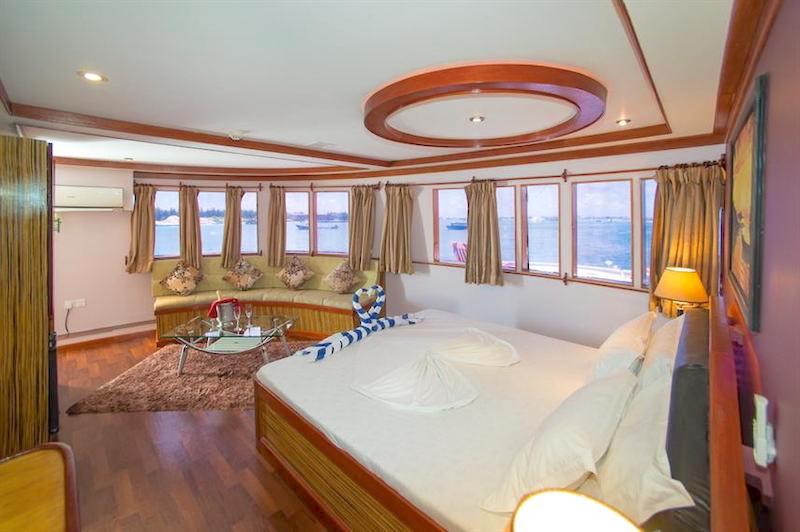

.jpg)


.jpg)
.jpg)





.jpg)



.jpg)

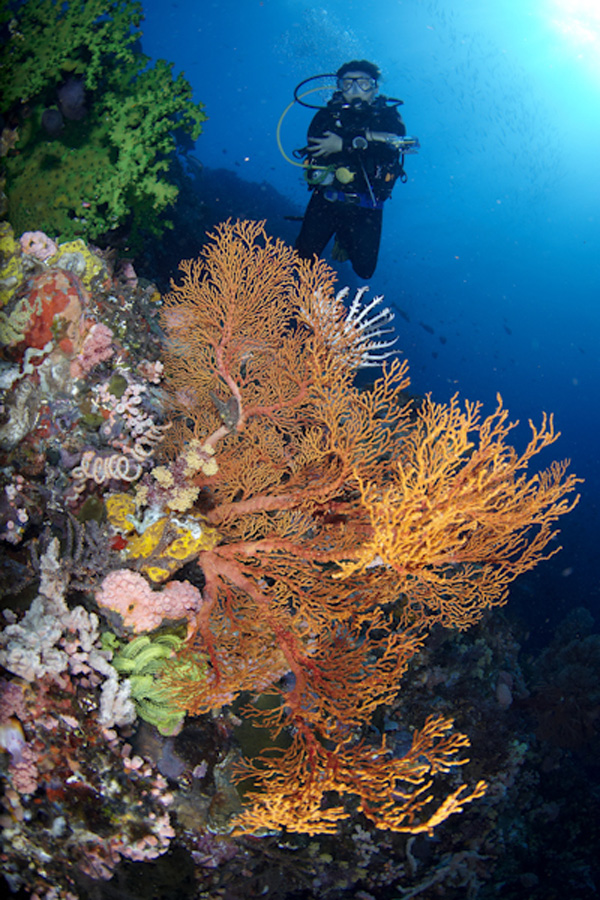
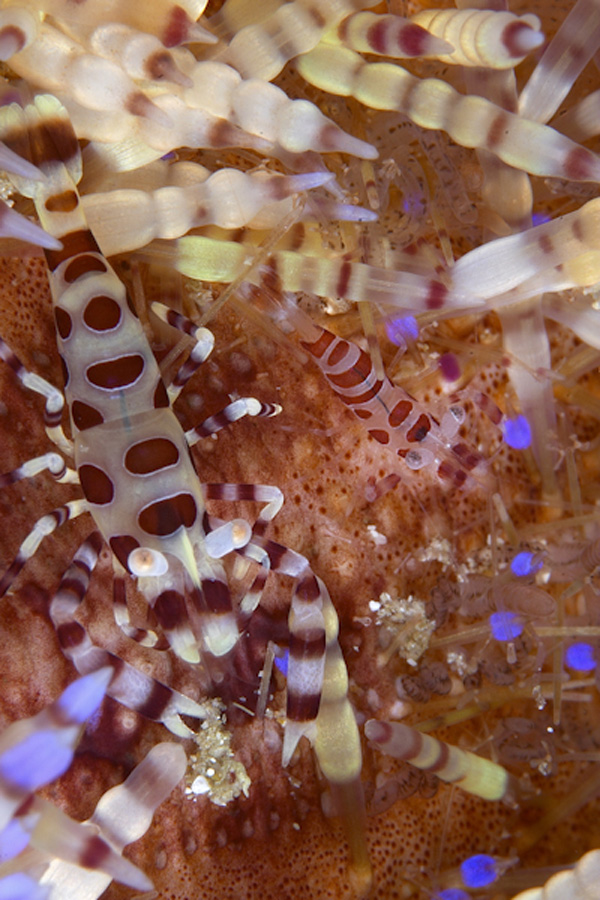
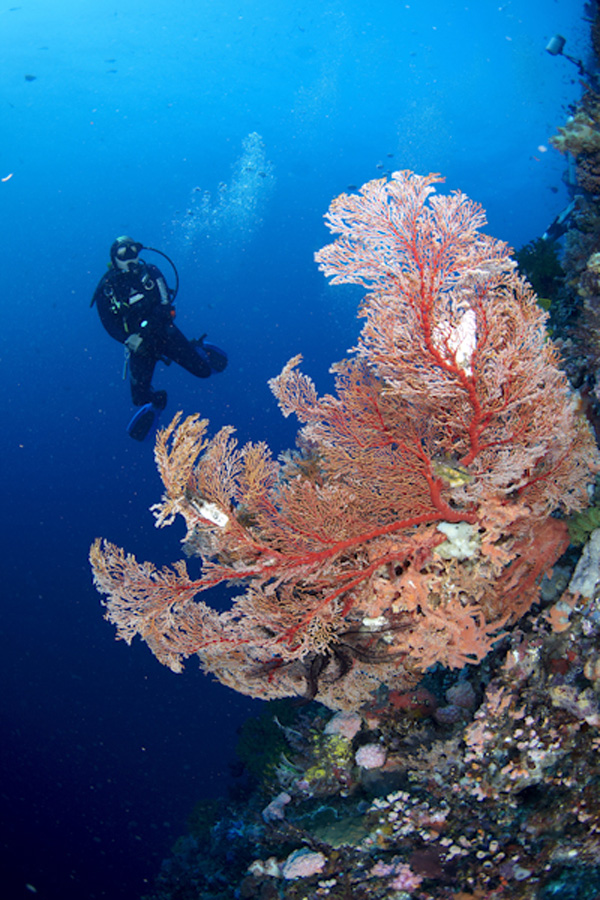
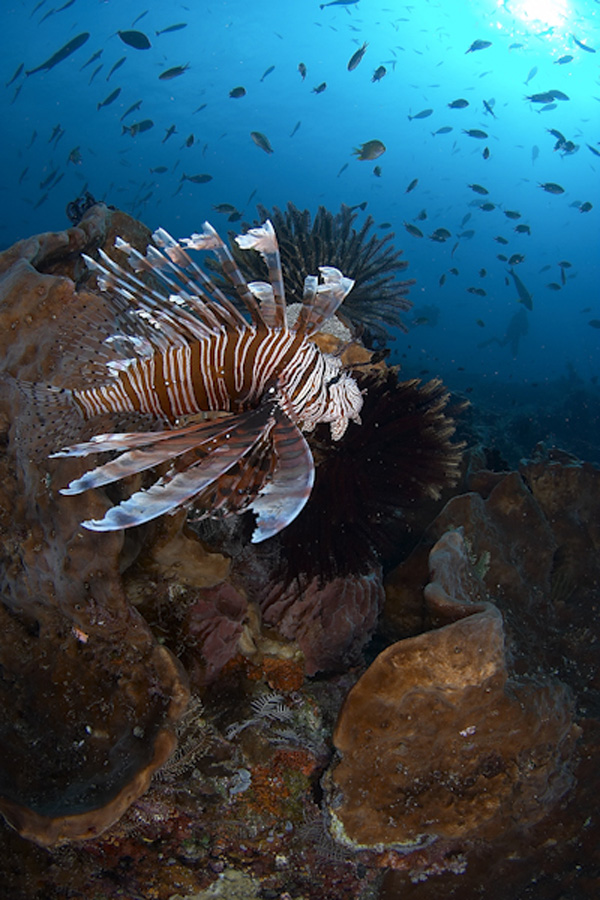
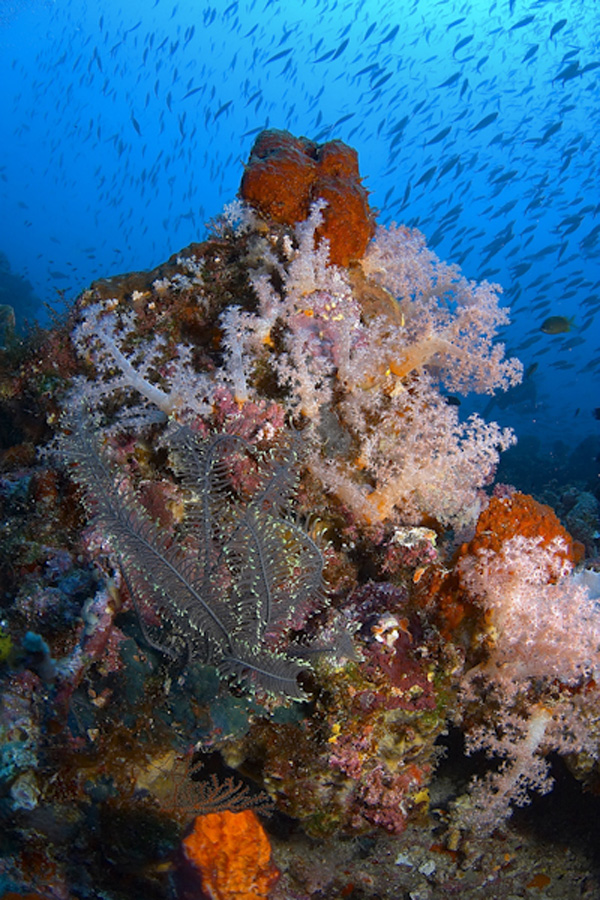
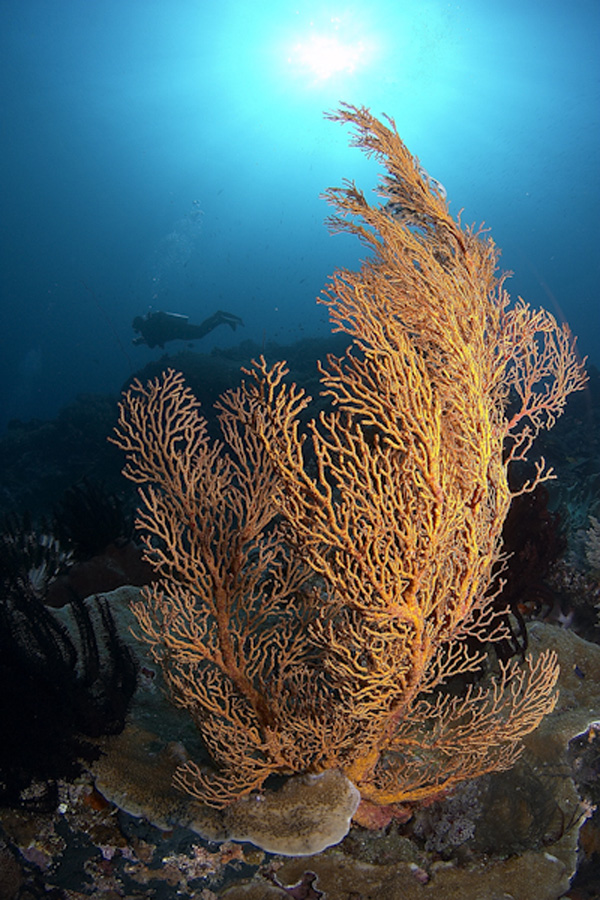
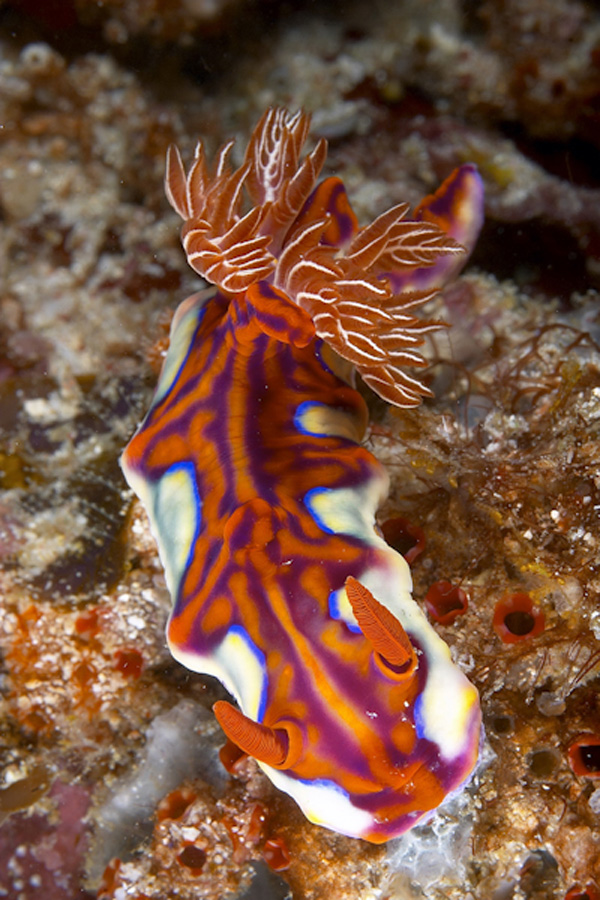
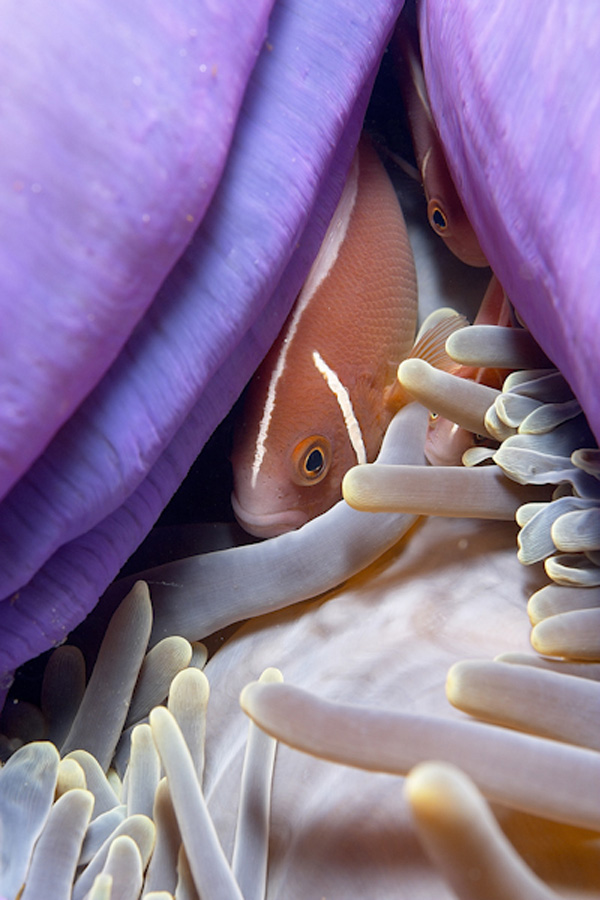
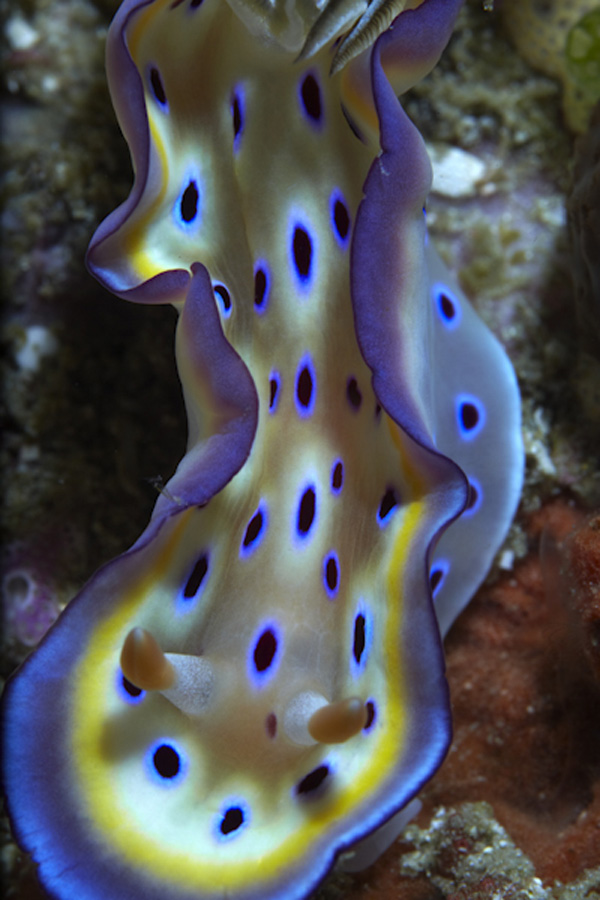
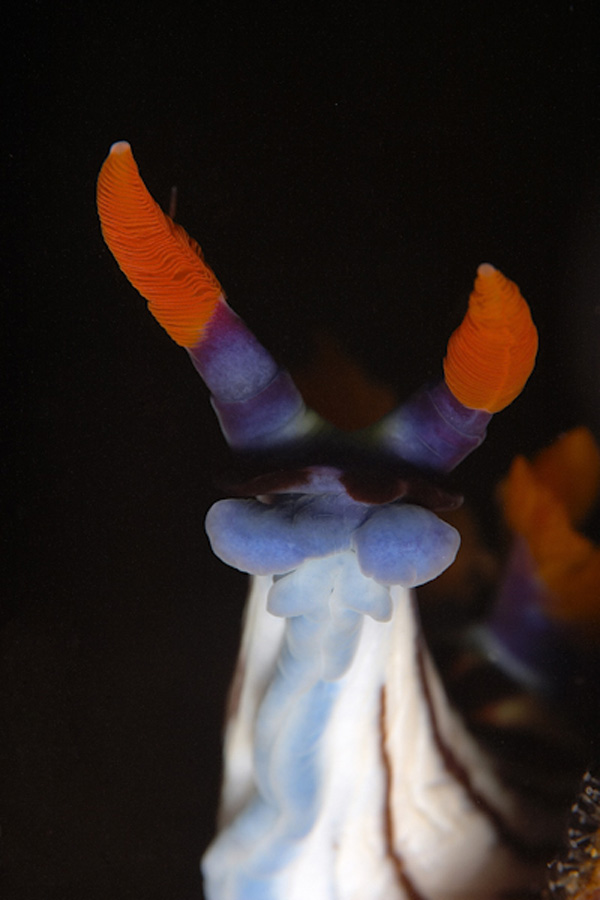
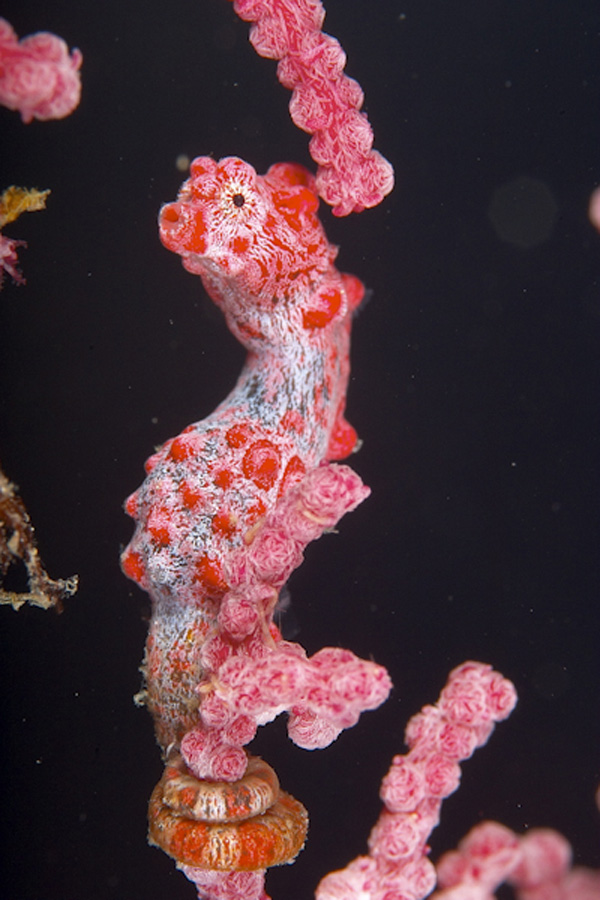
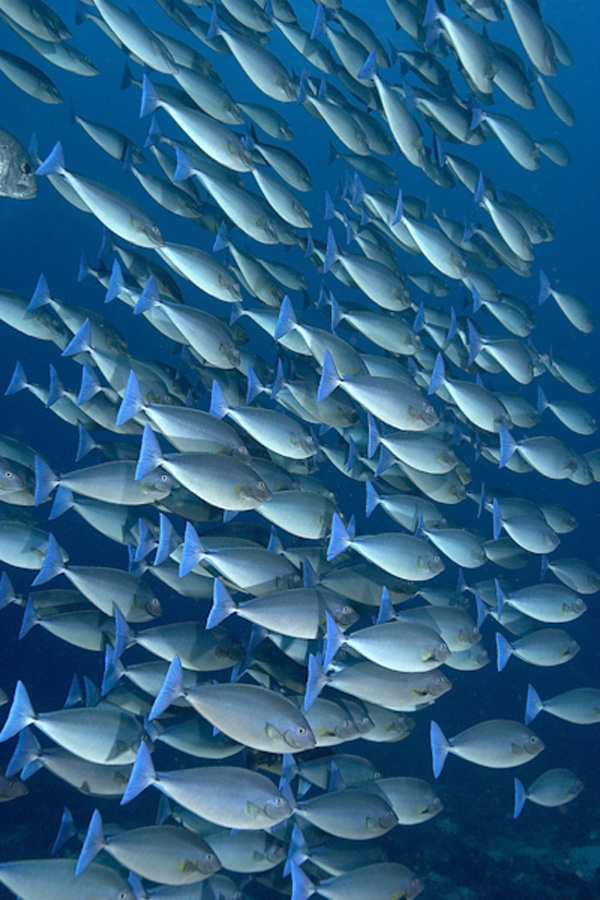
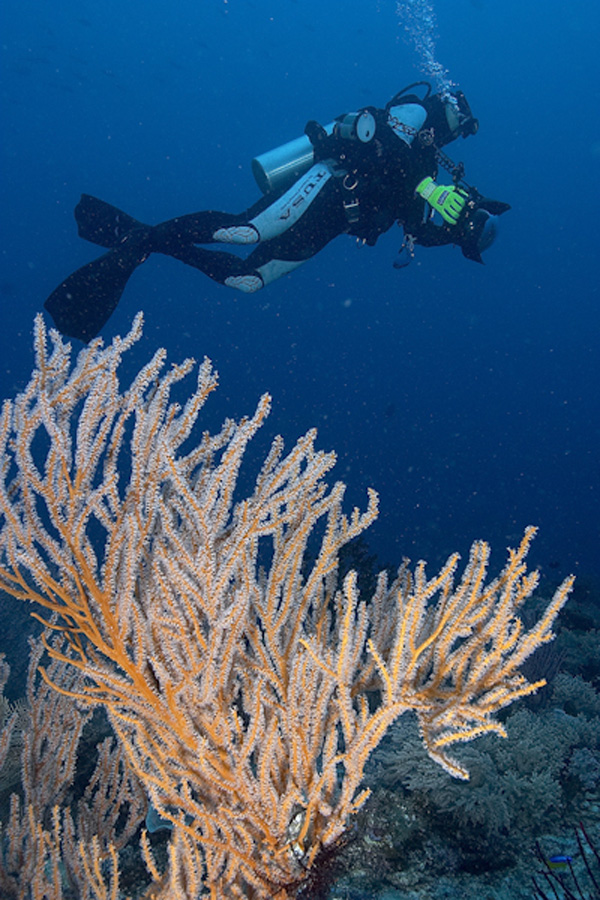
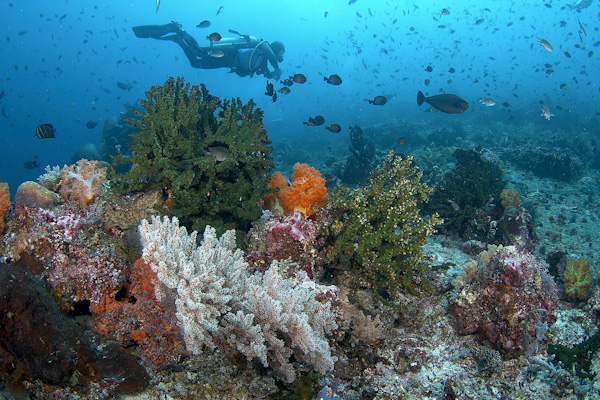
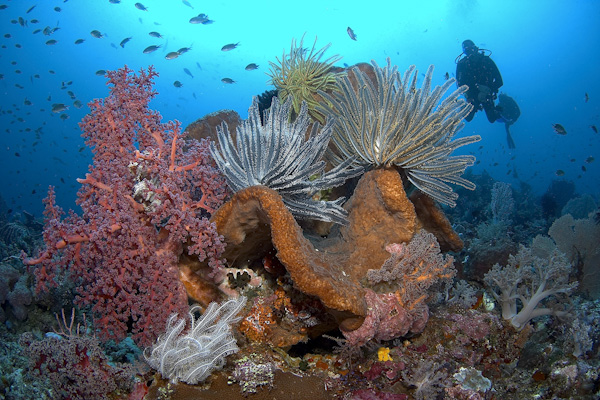
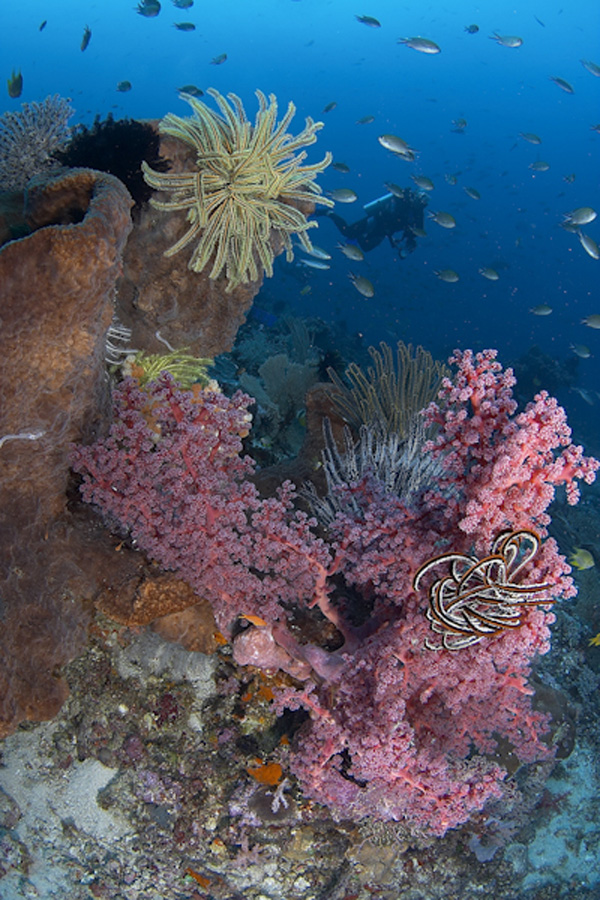
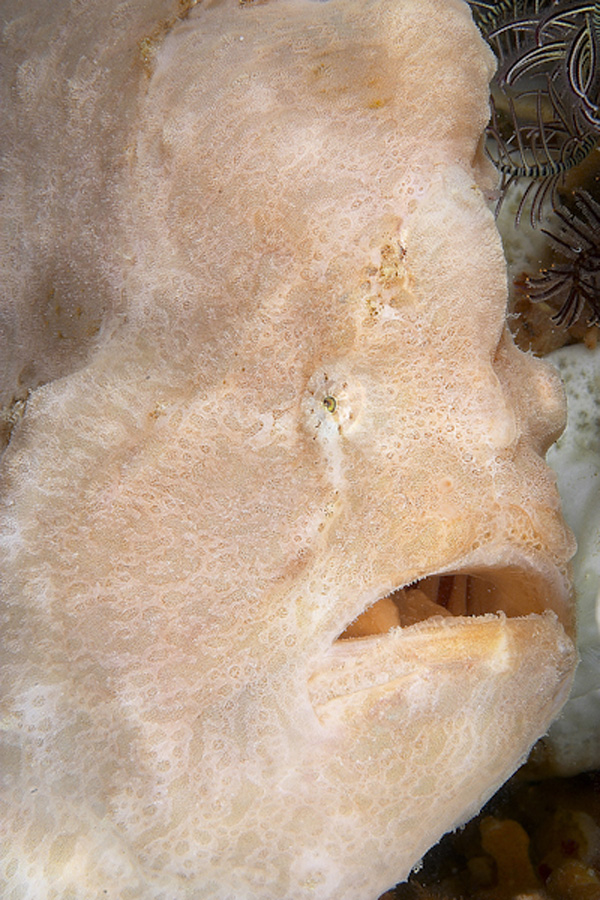
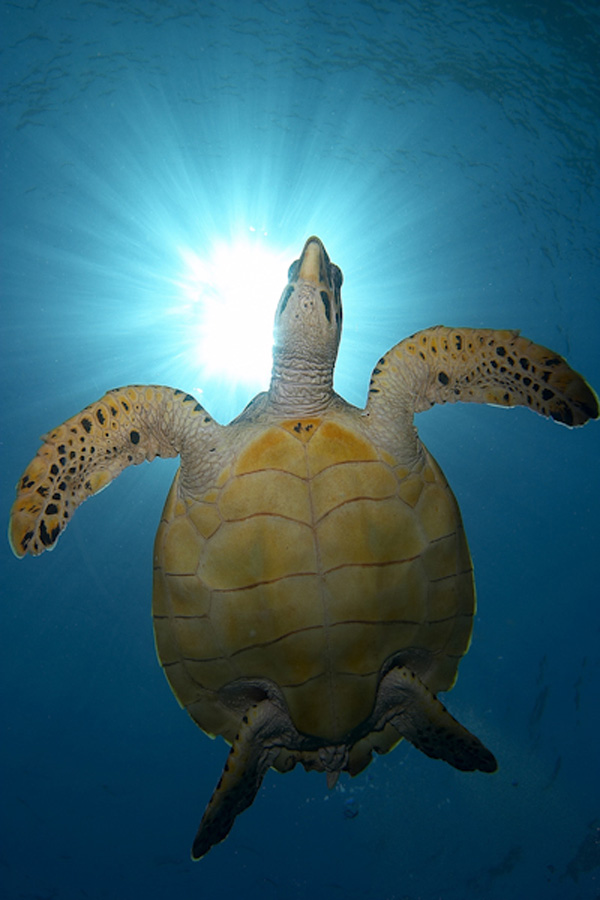

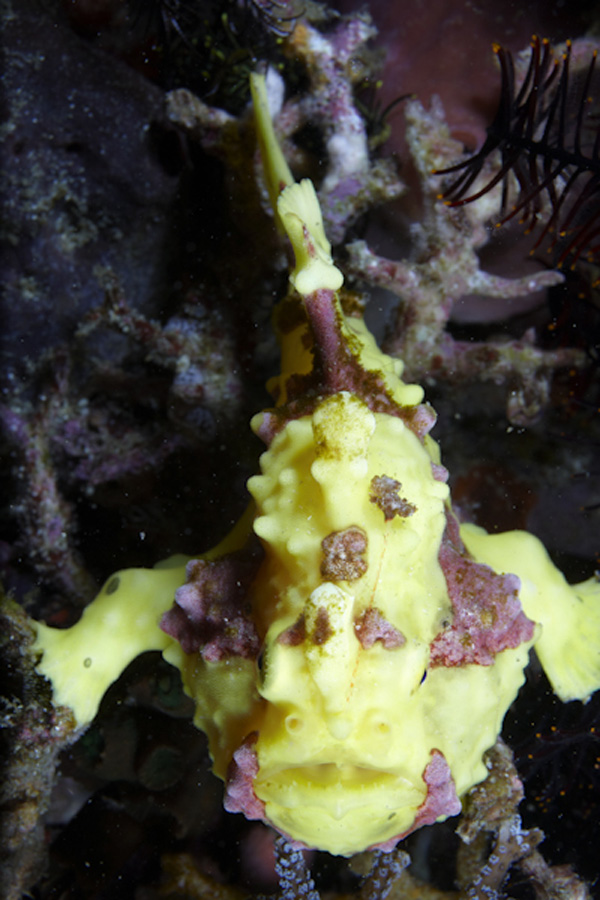
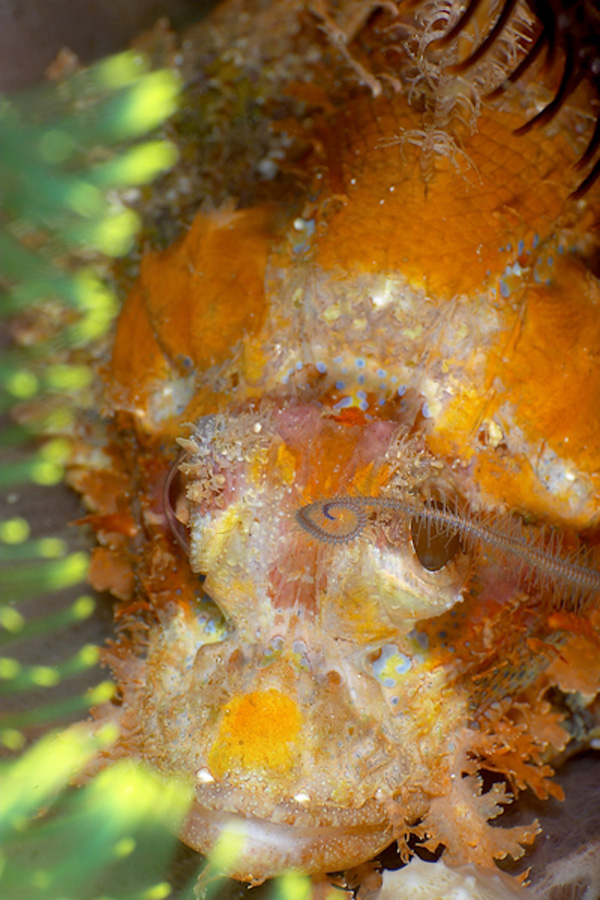
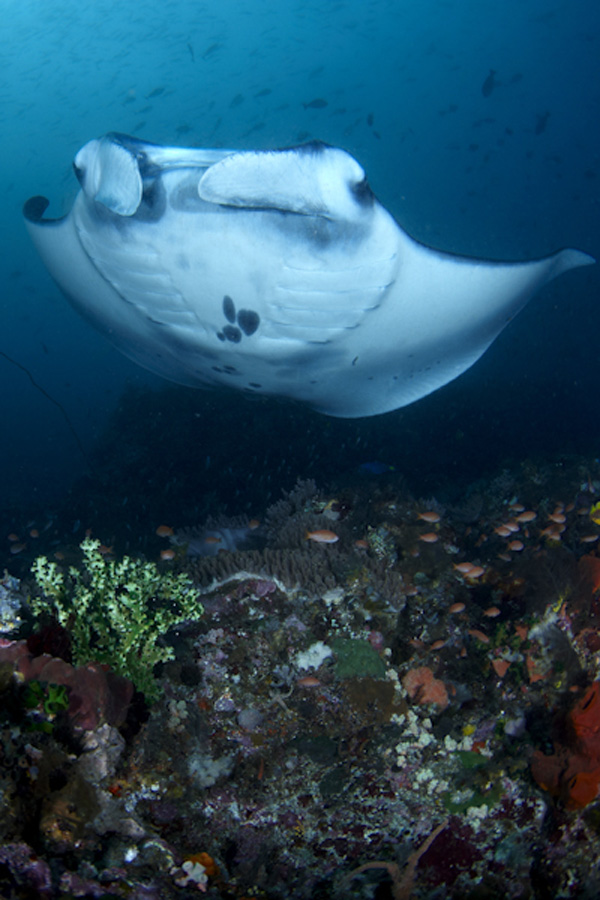
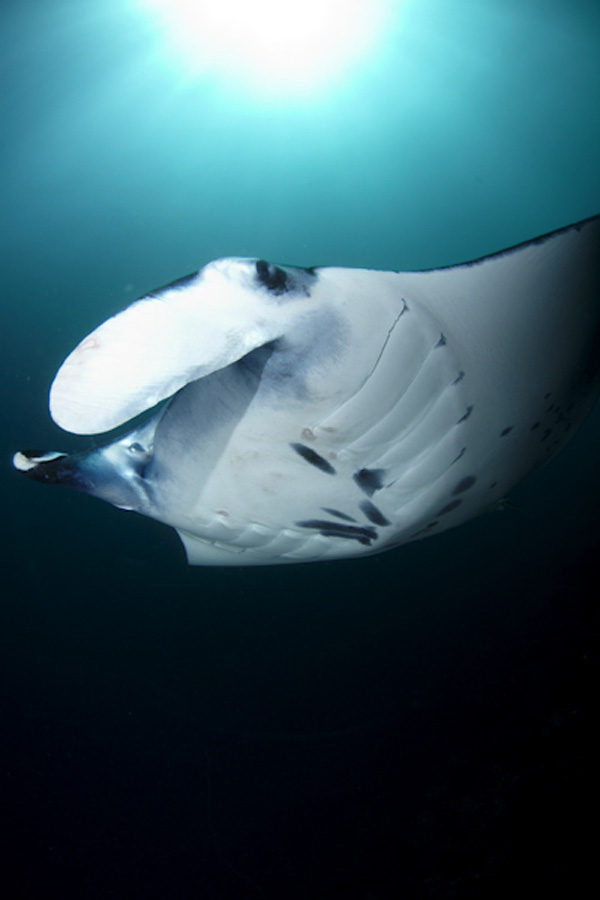
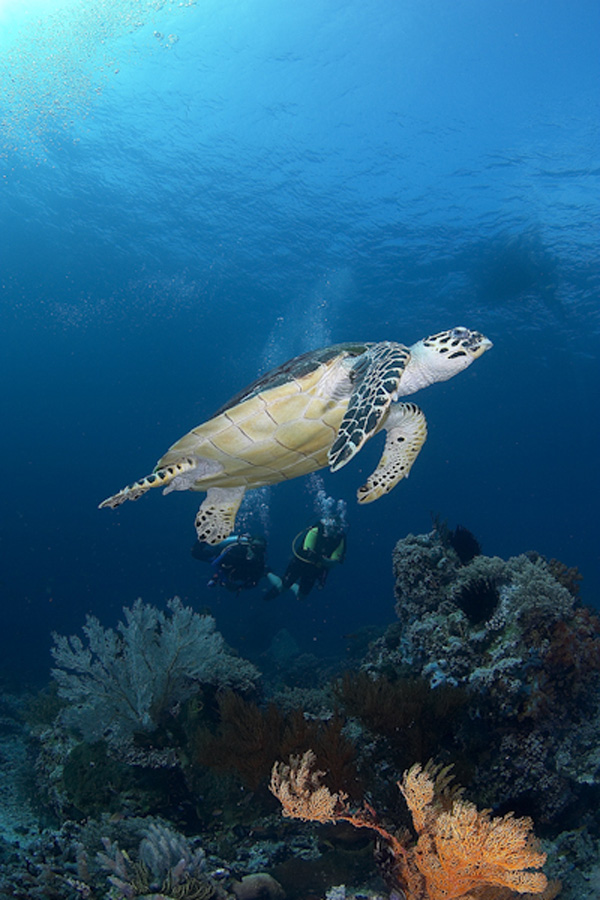
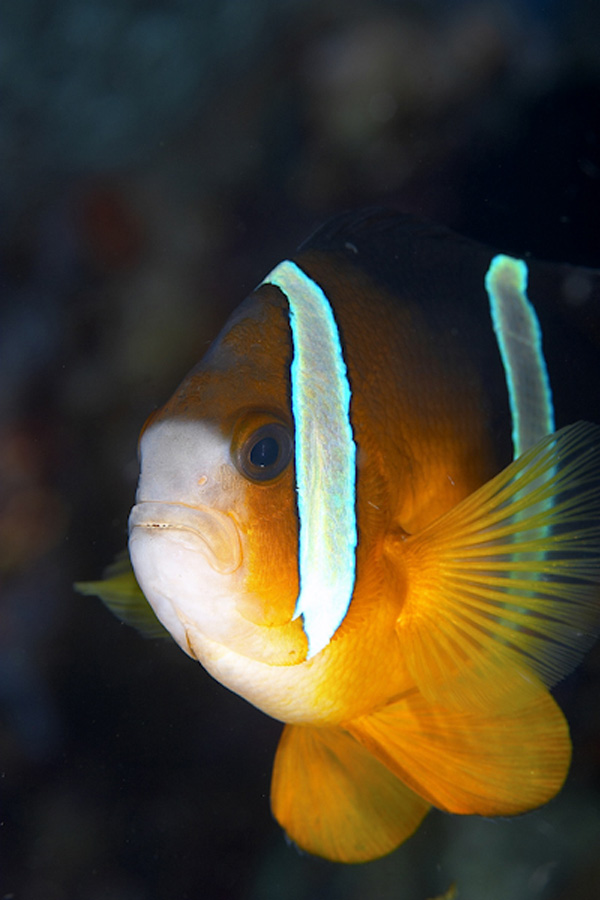



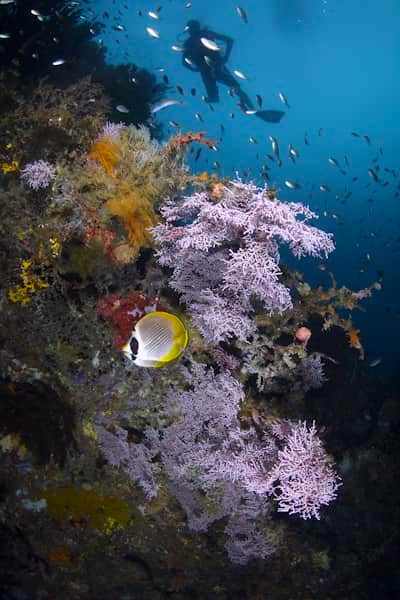
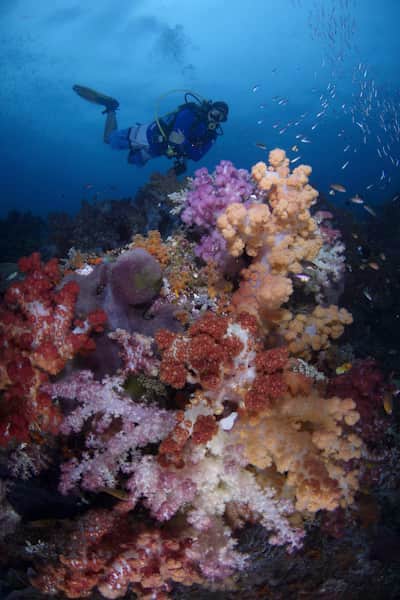




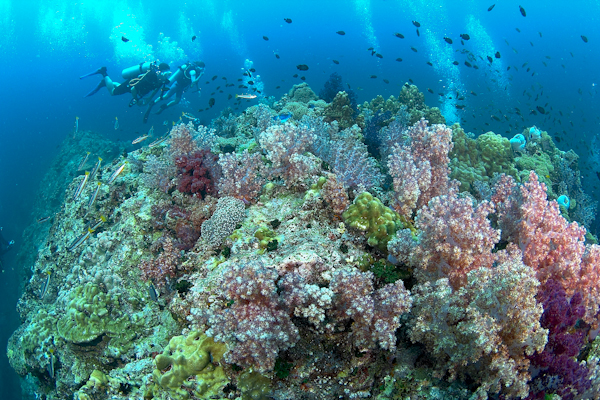
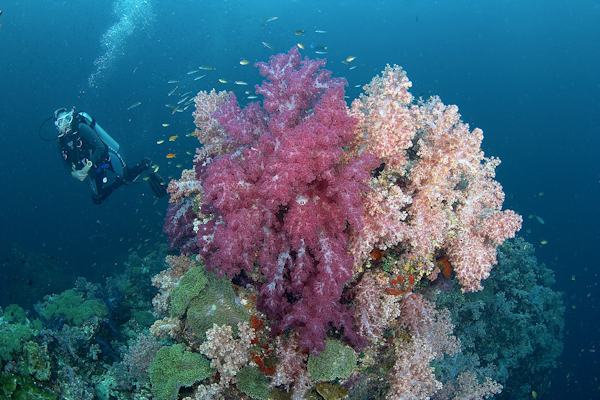
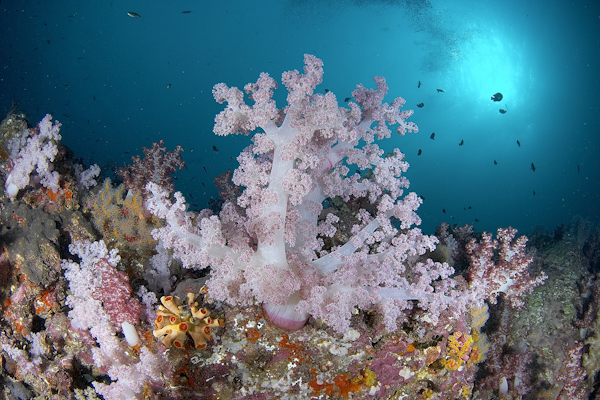
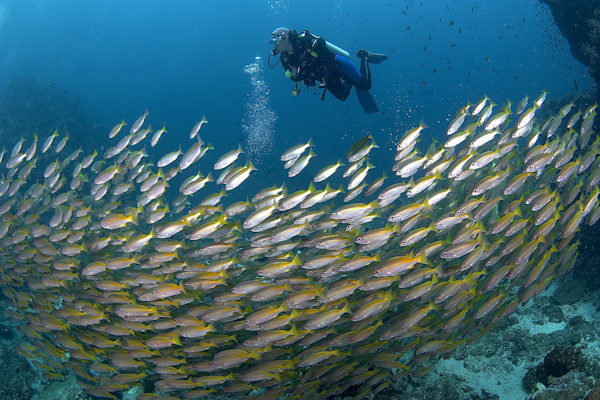




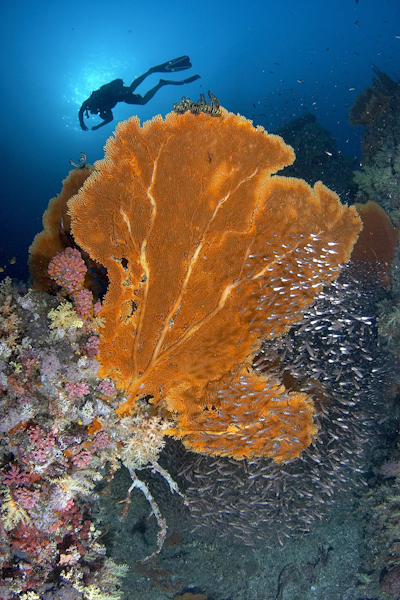






.jpg)








.jpg)




